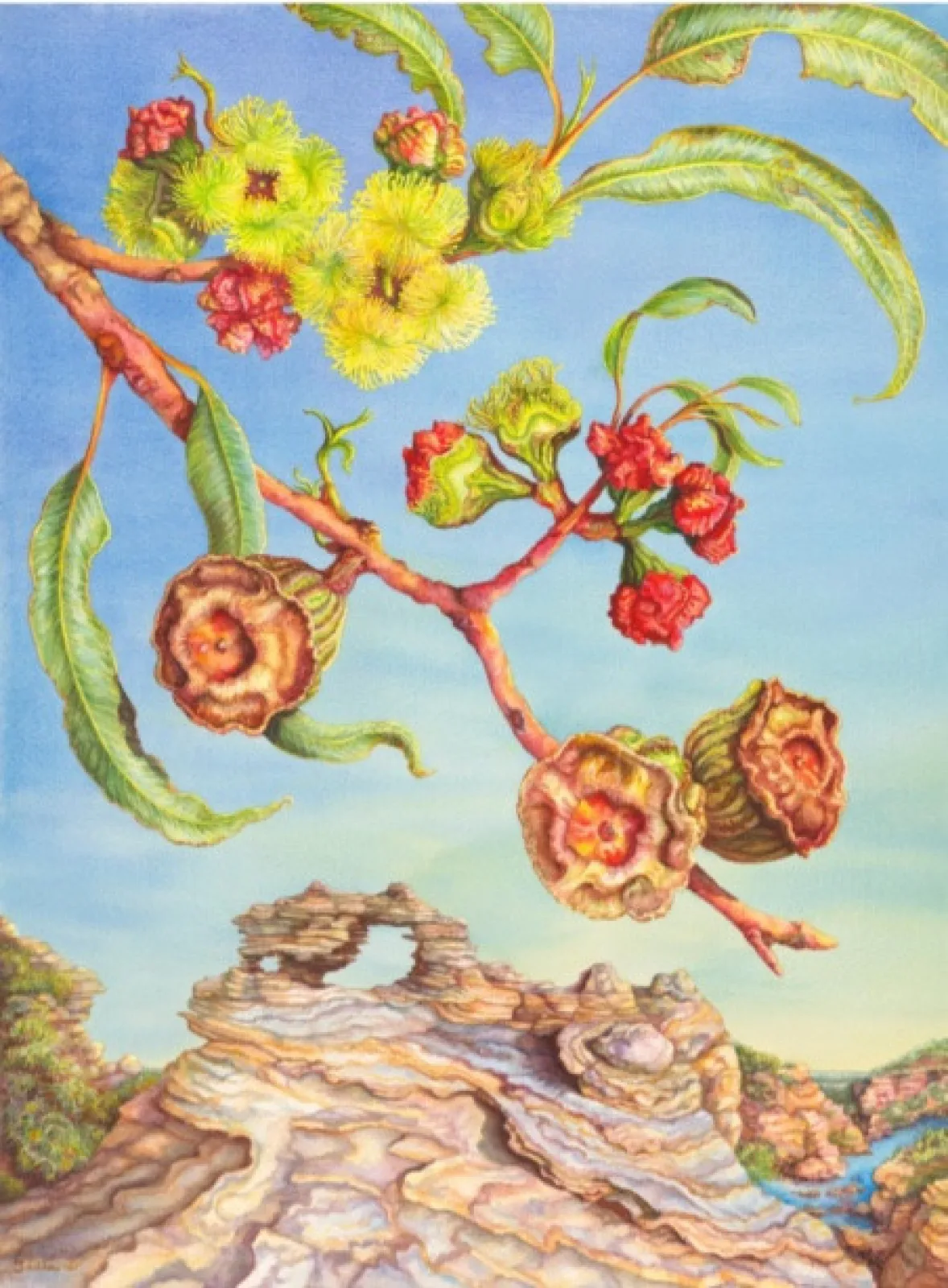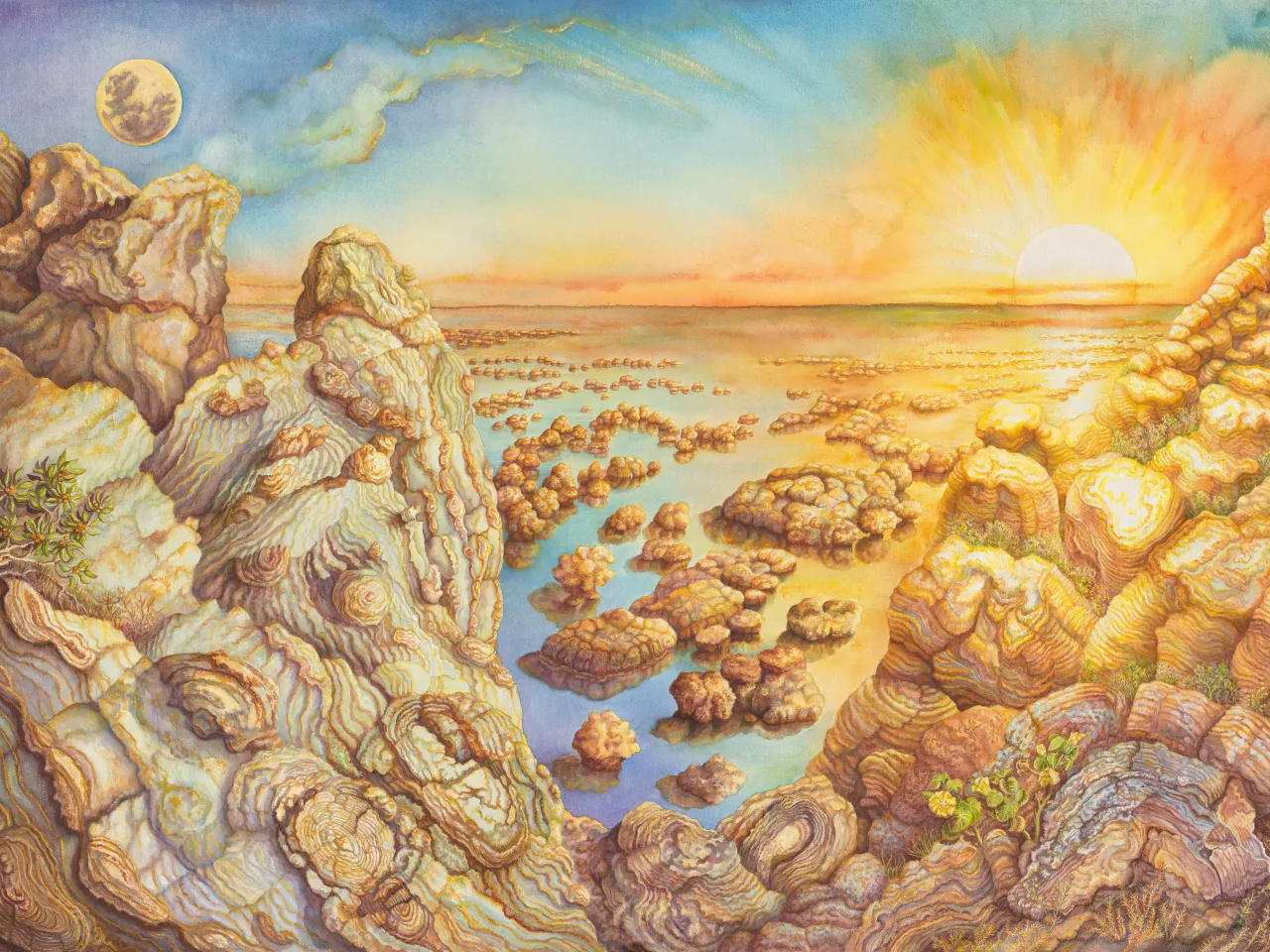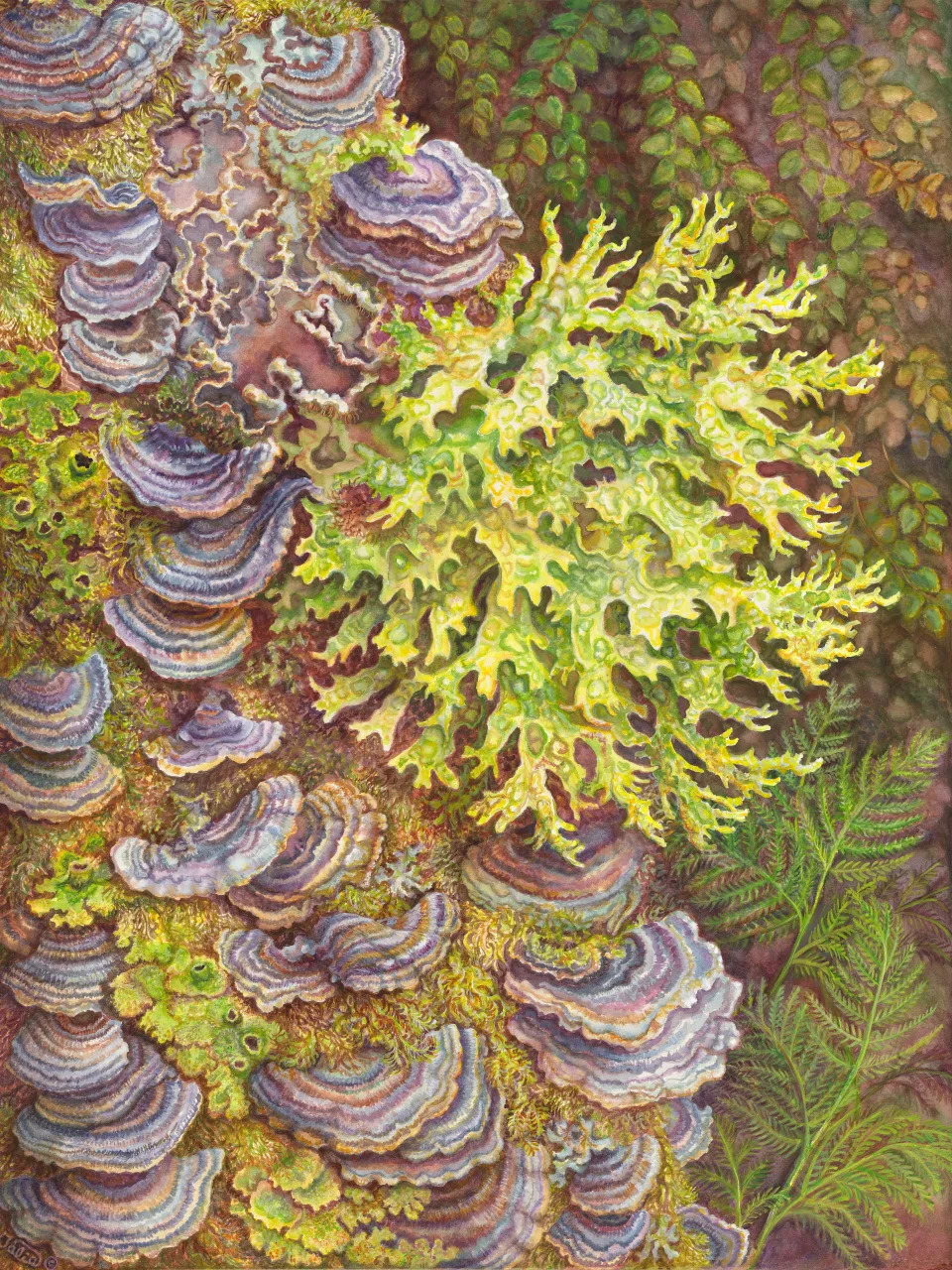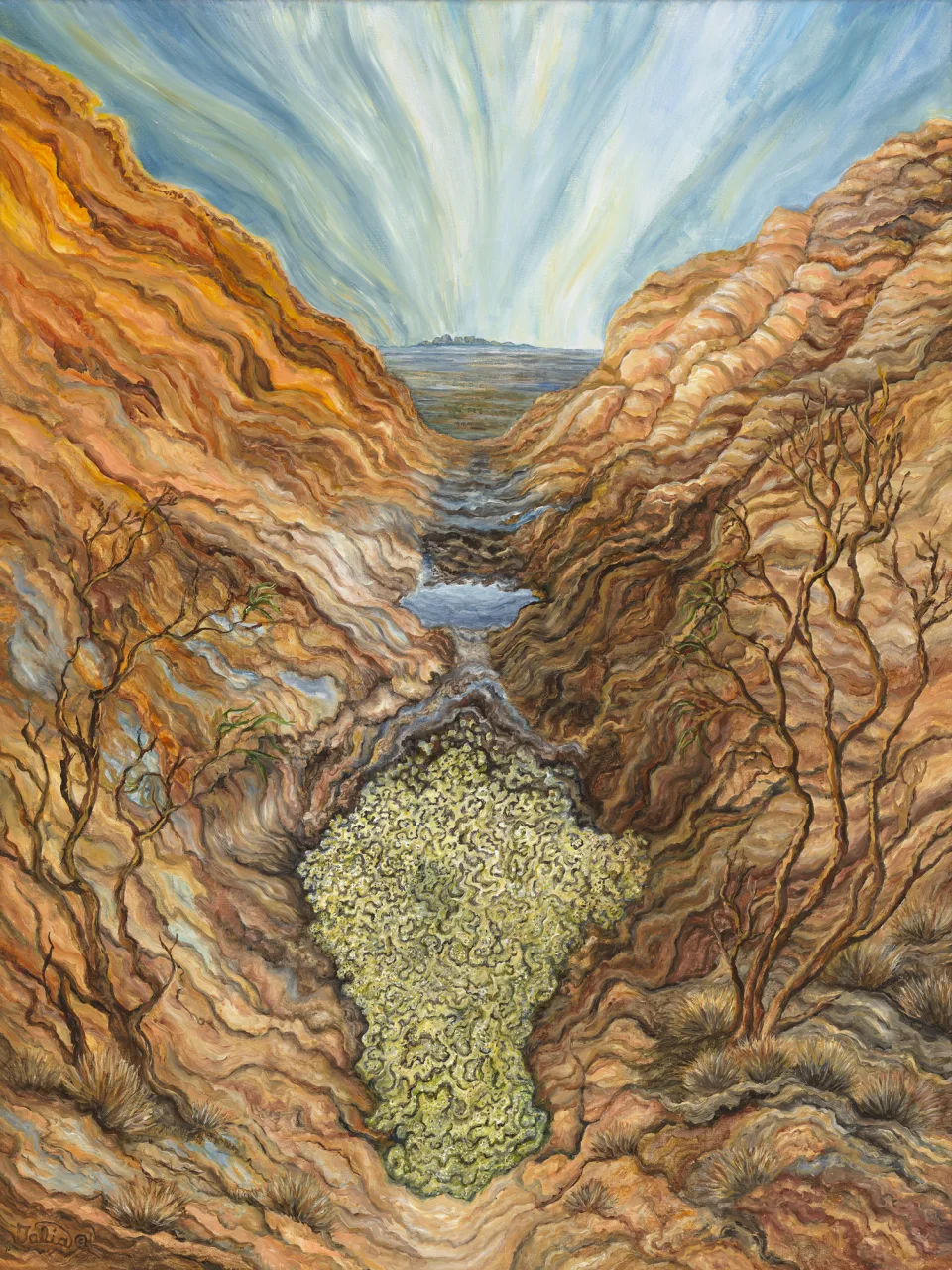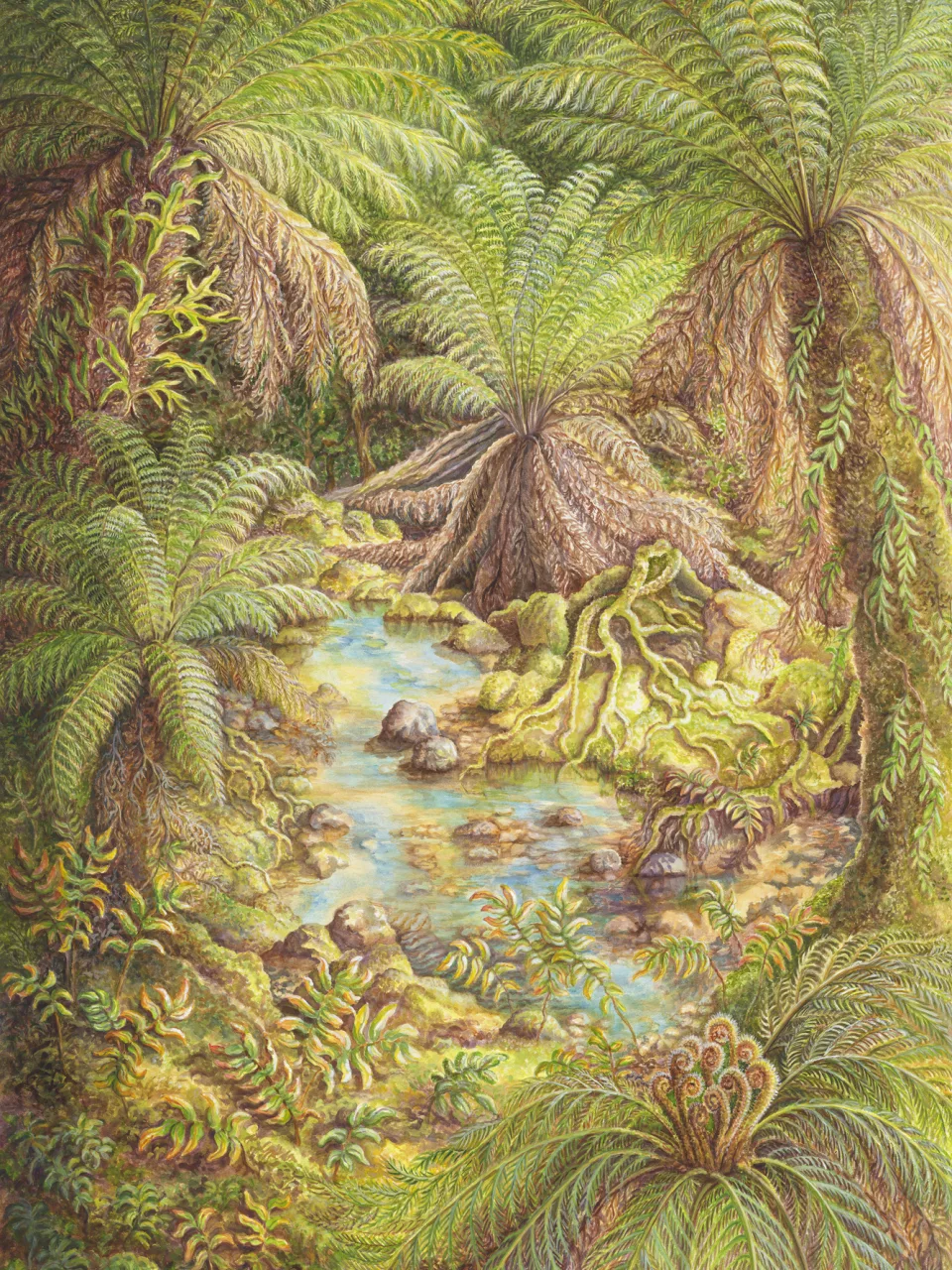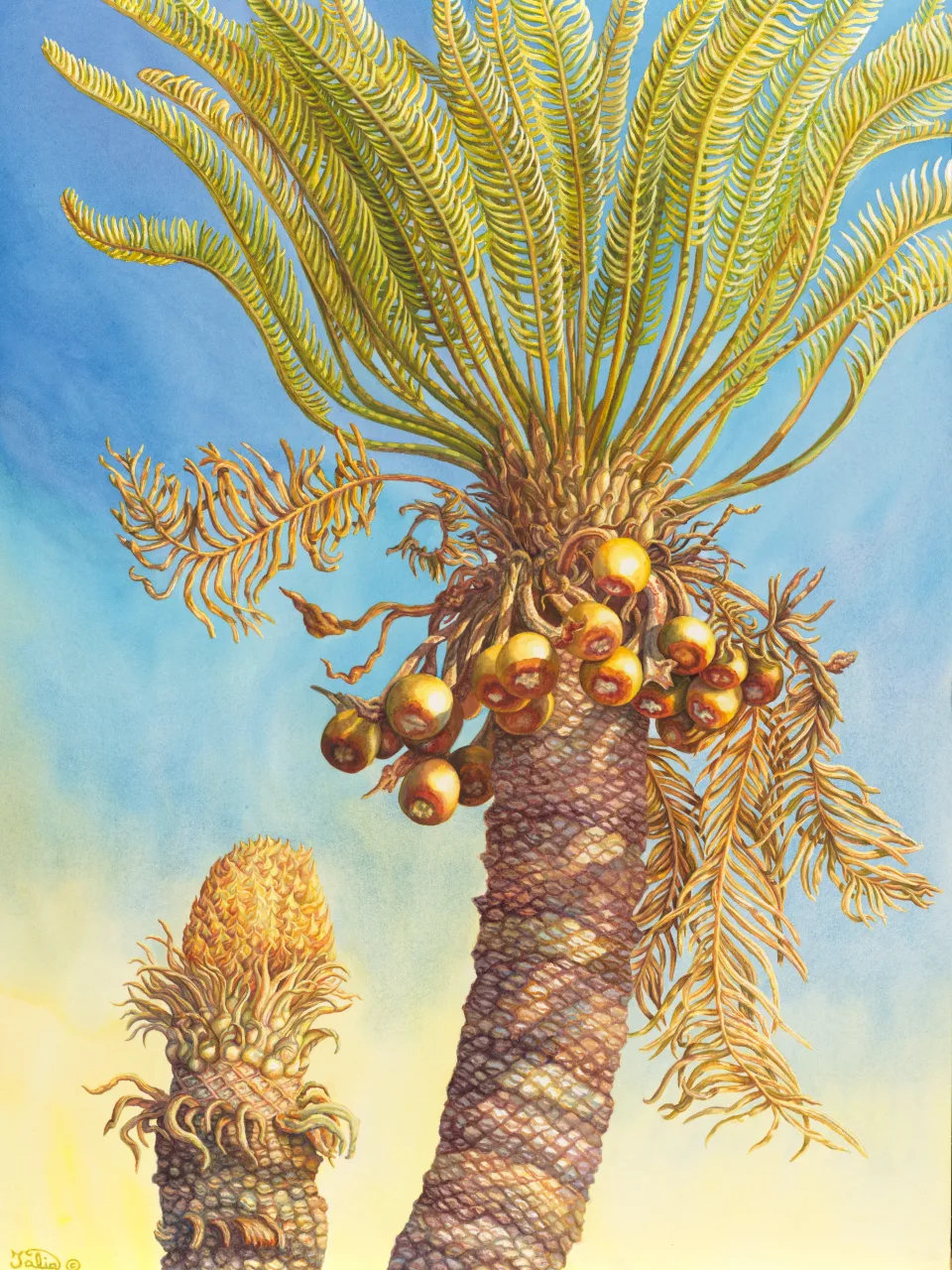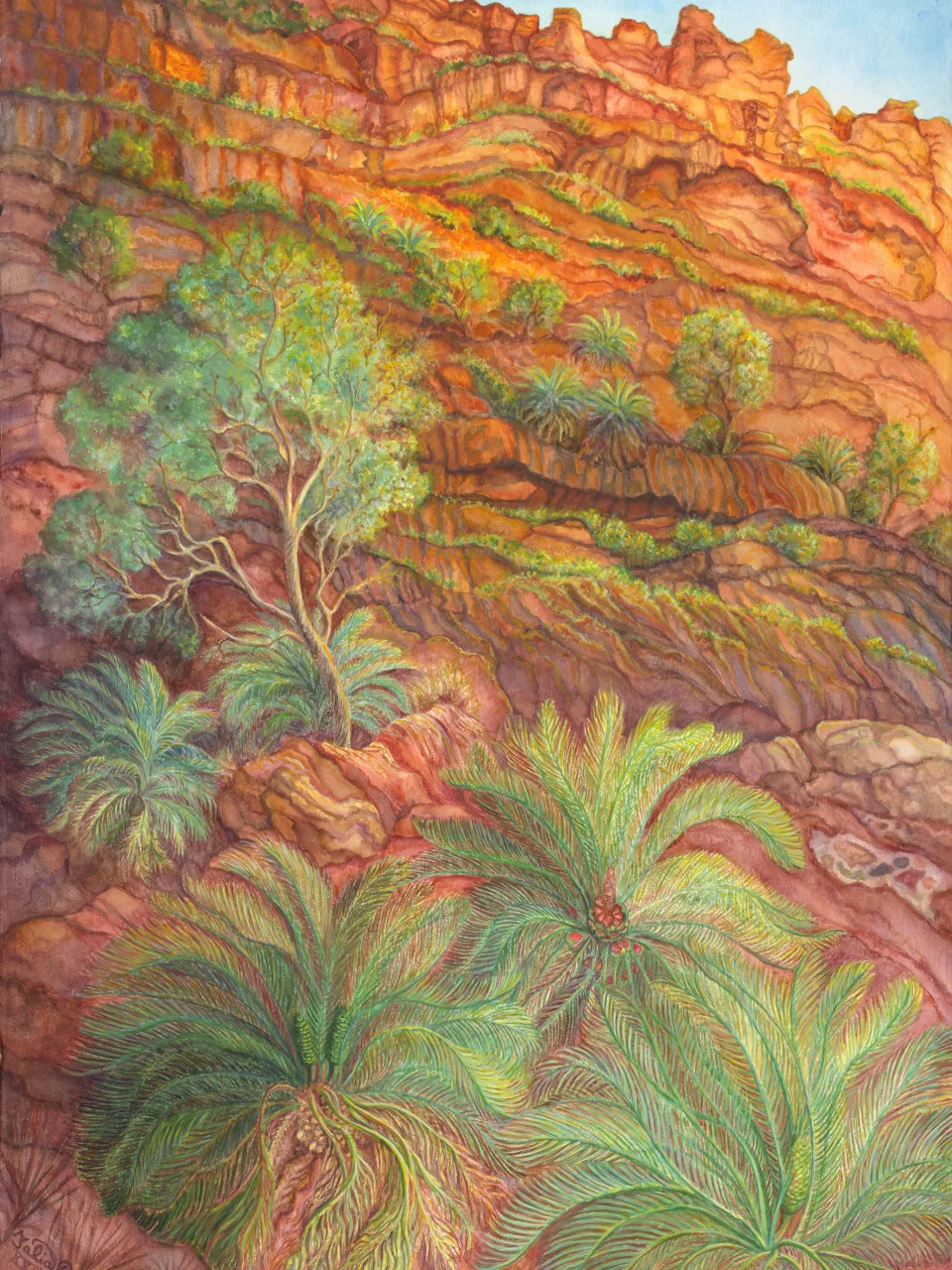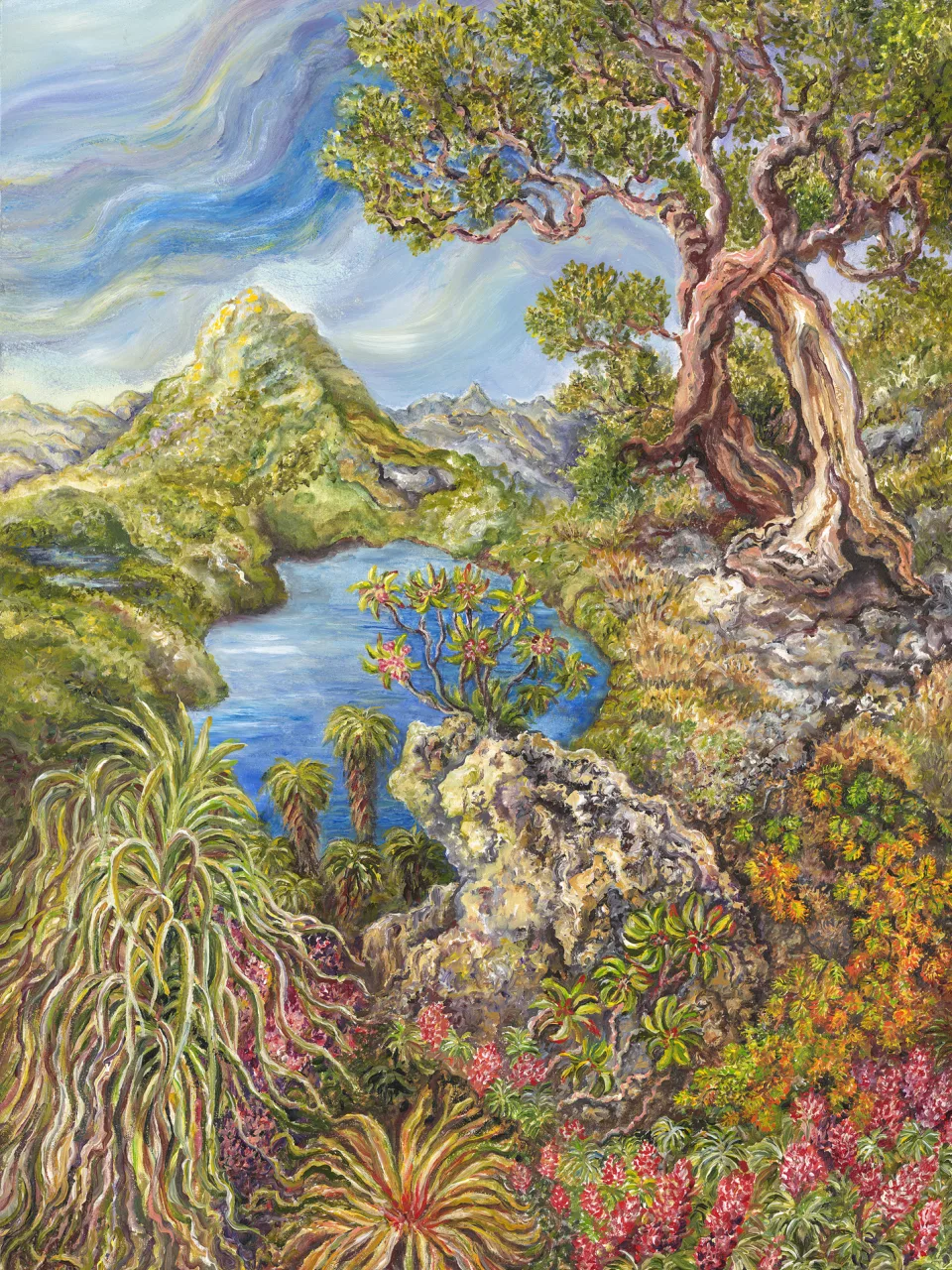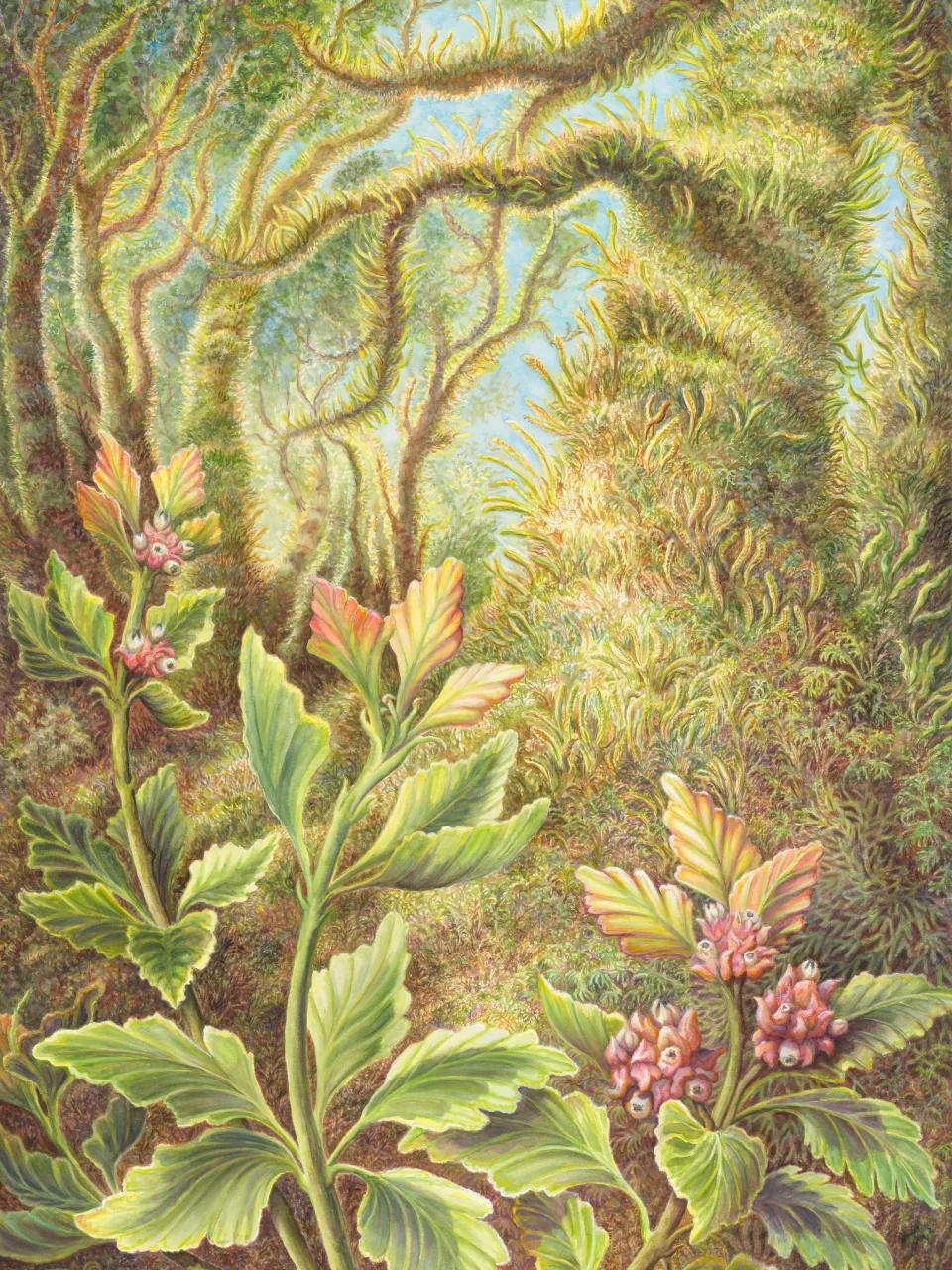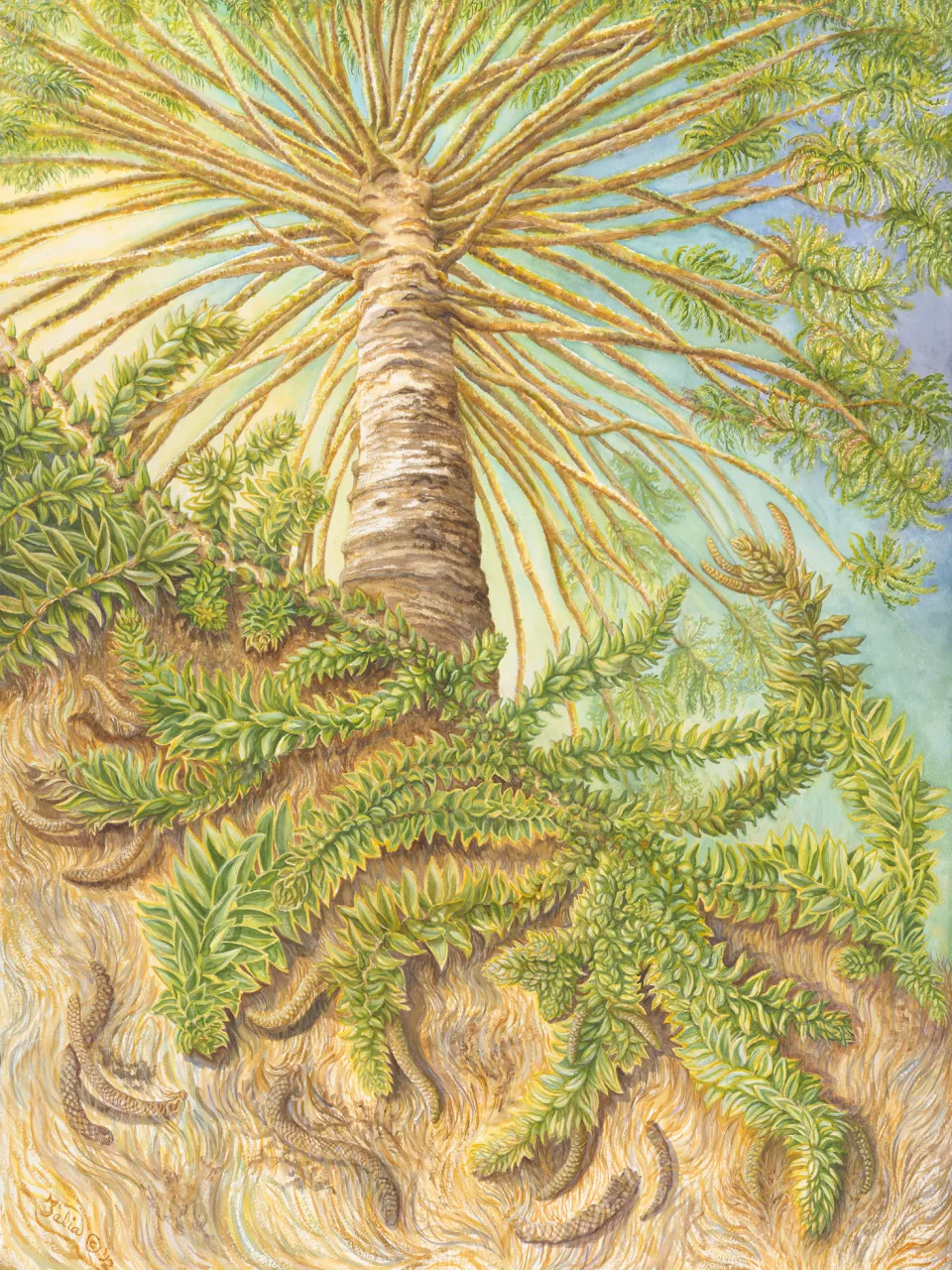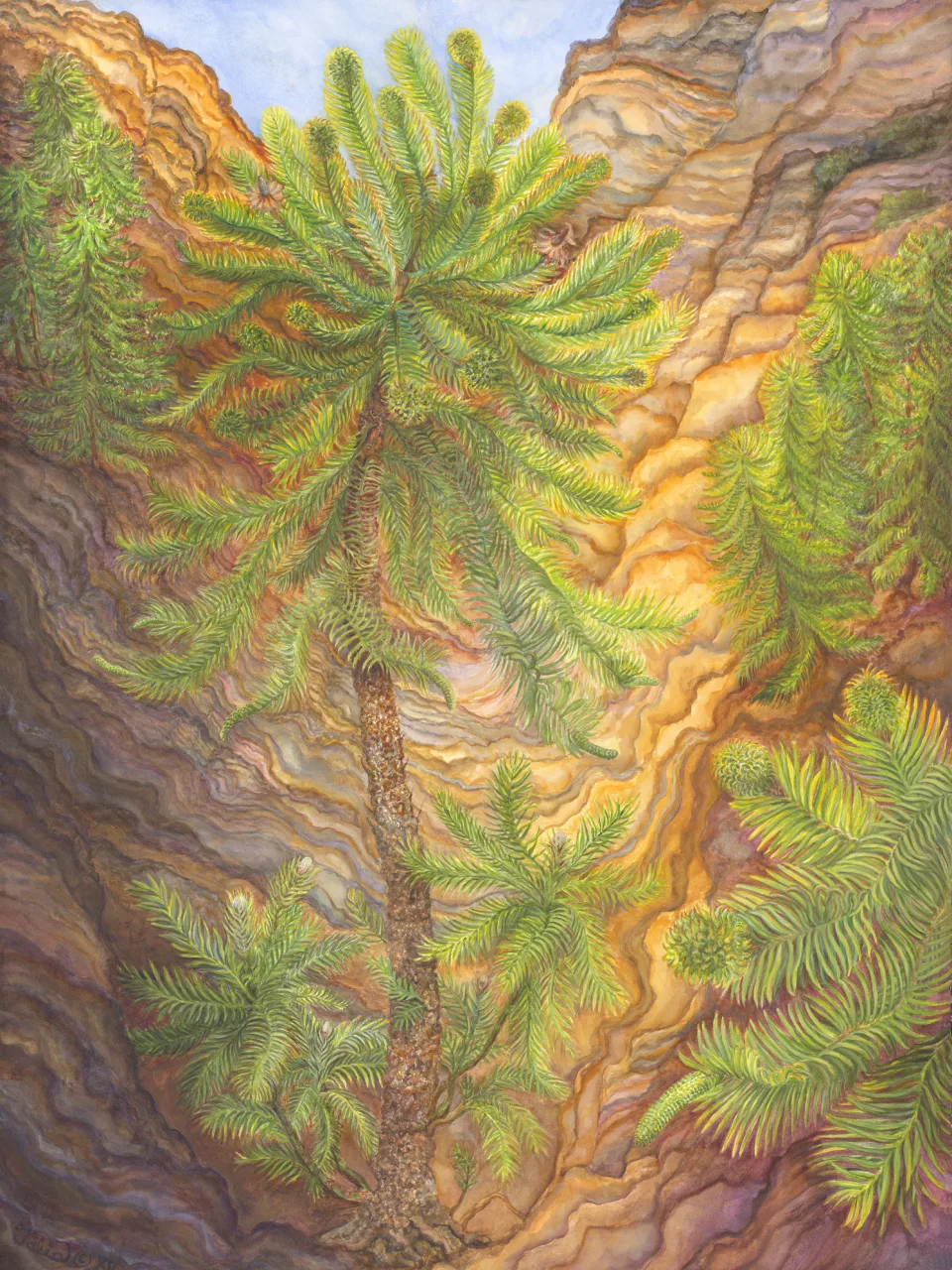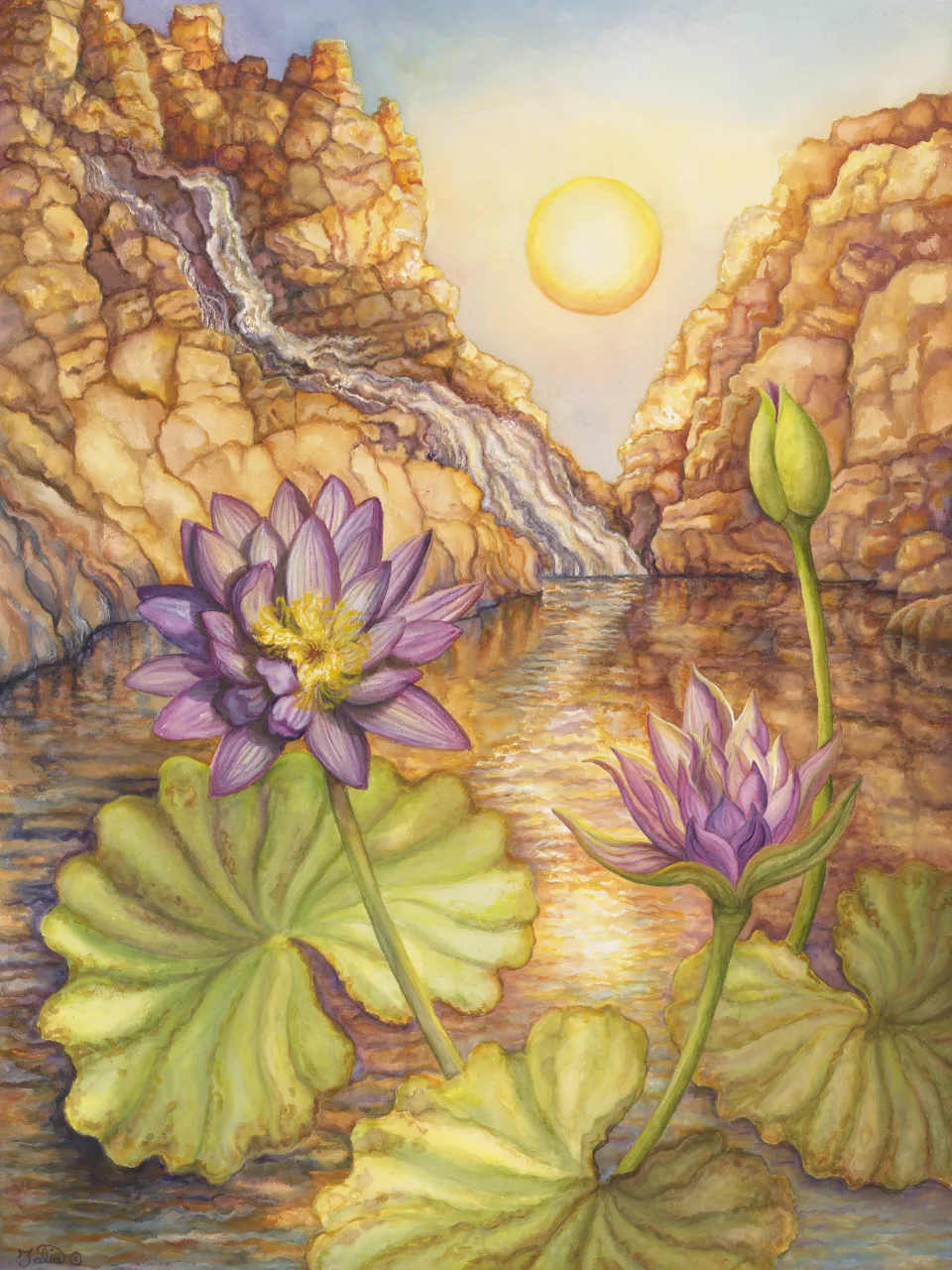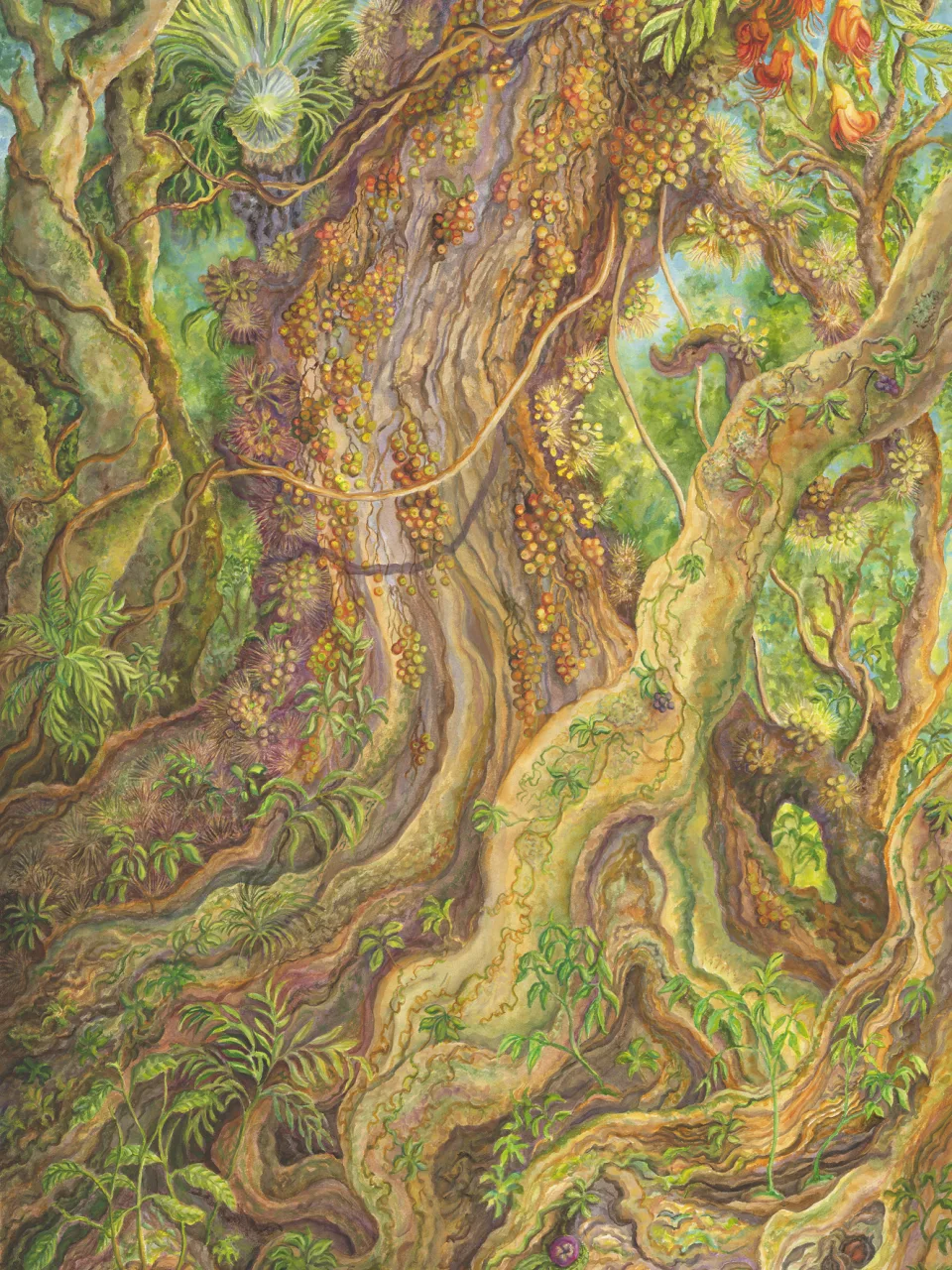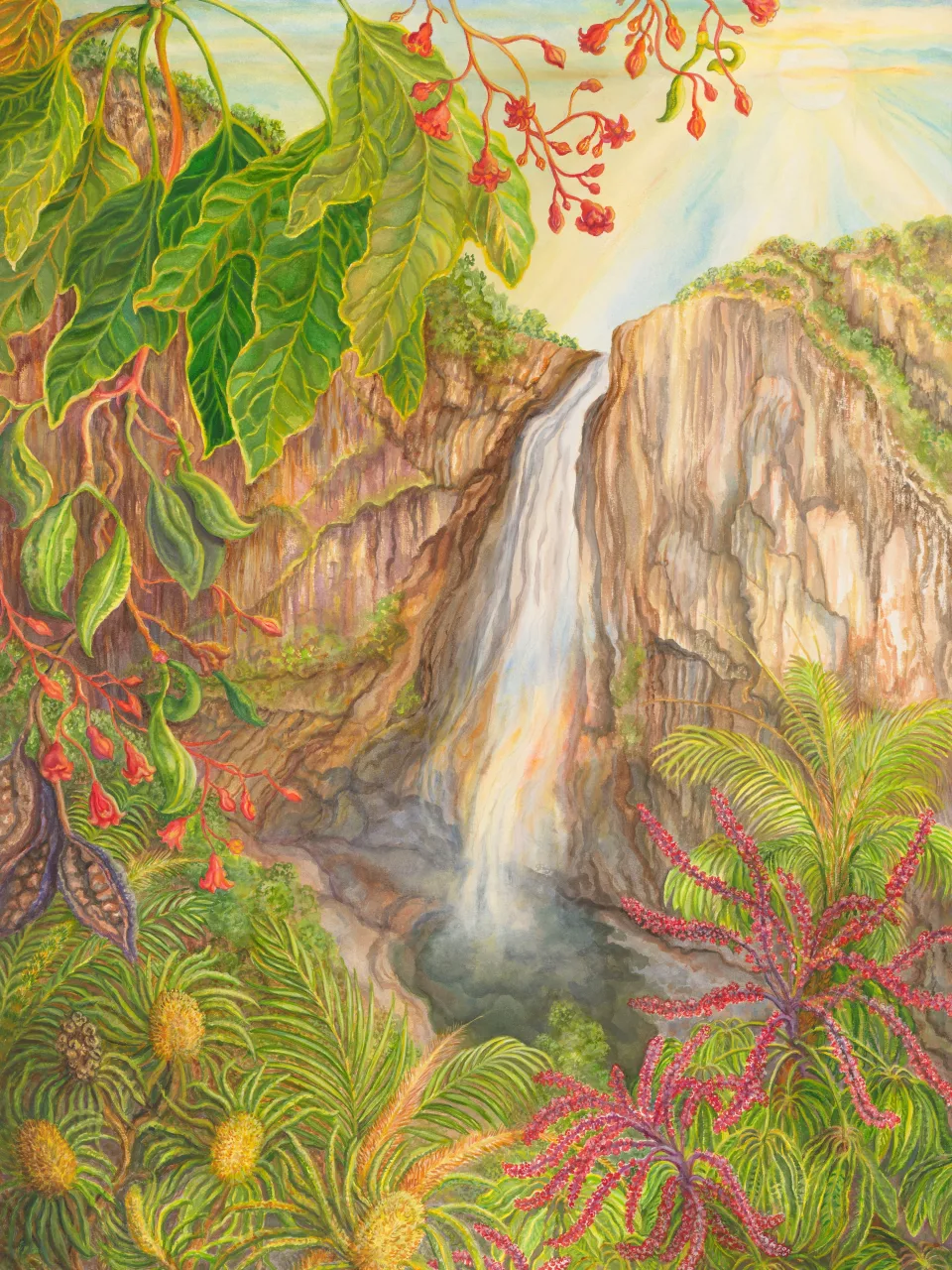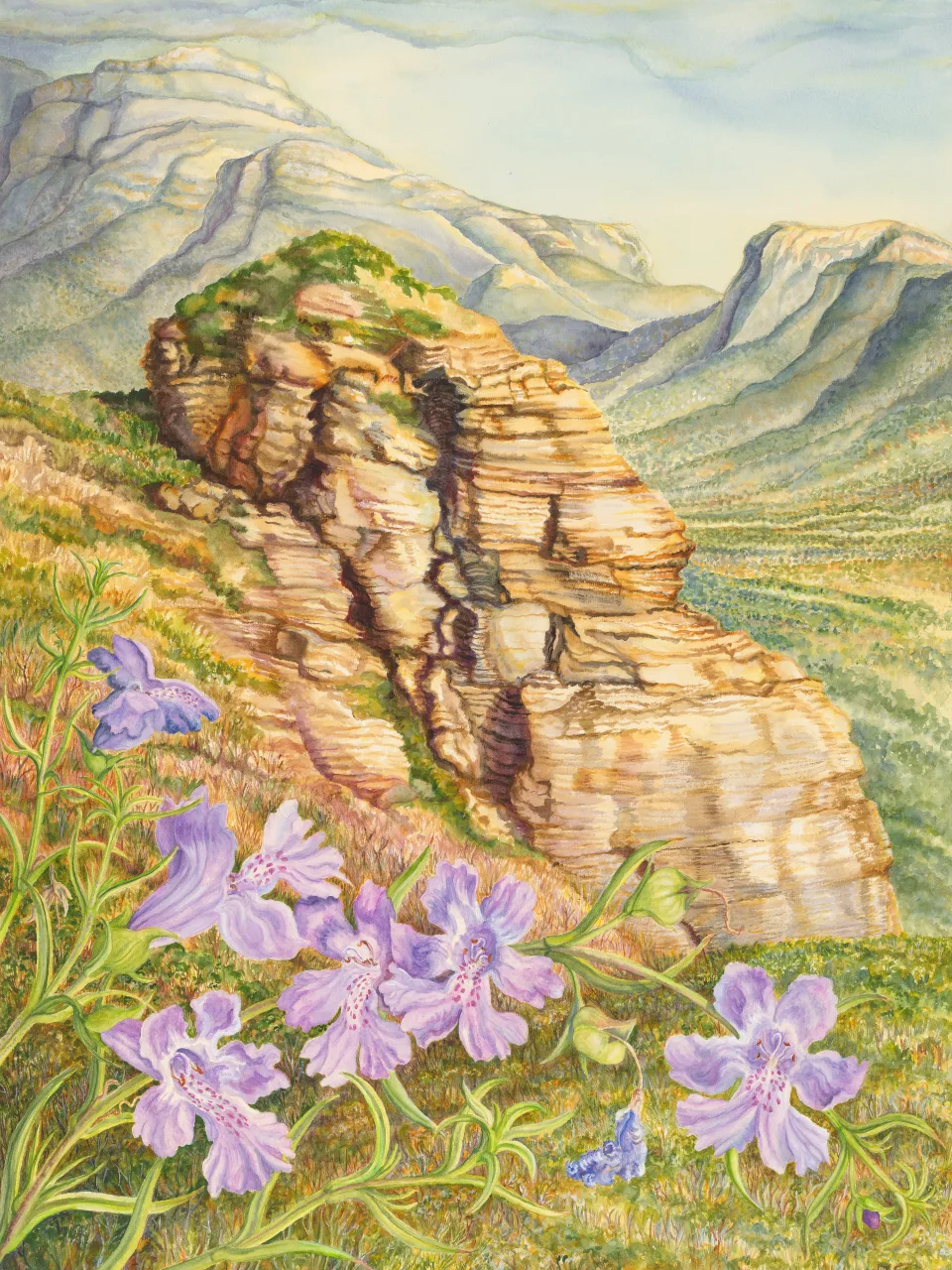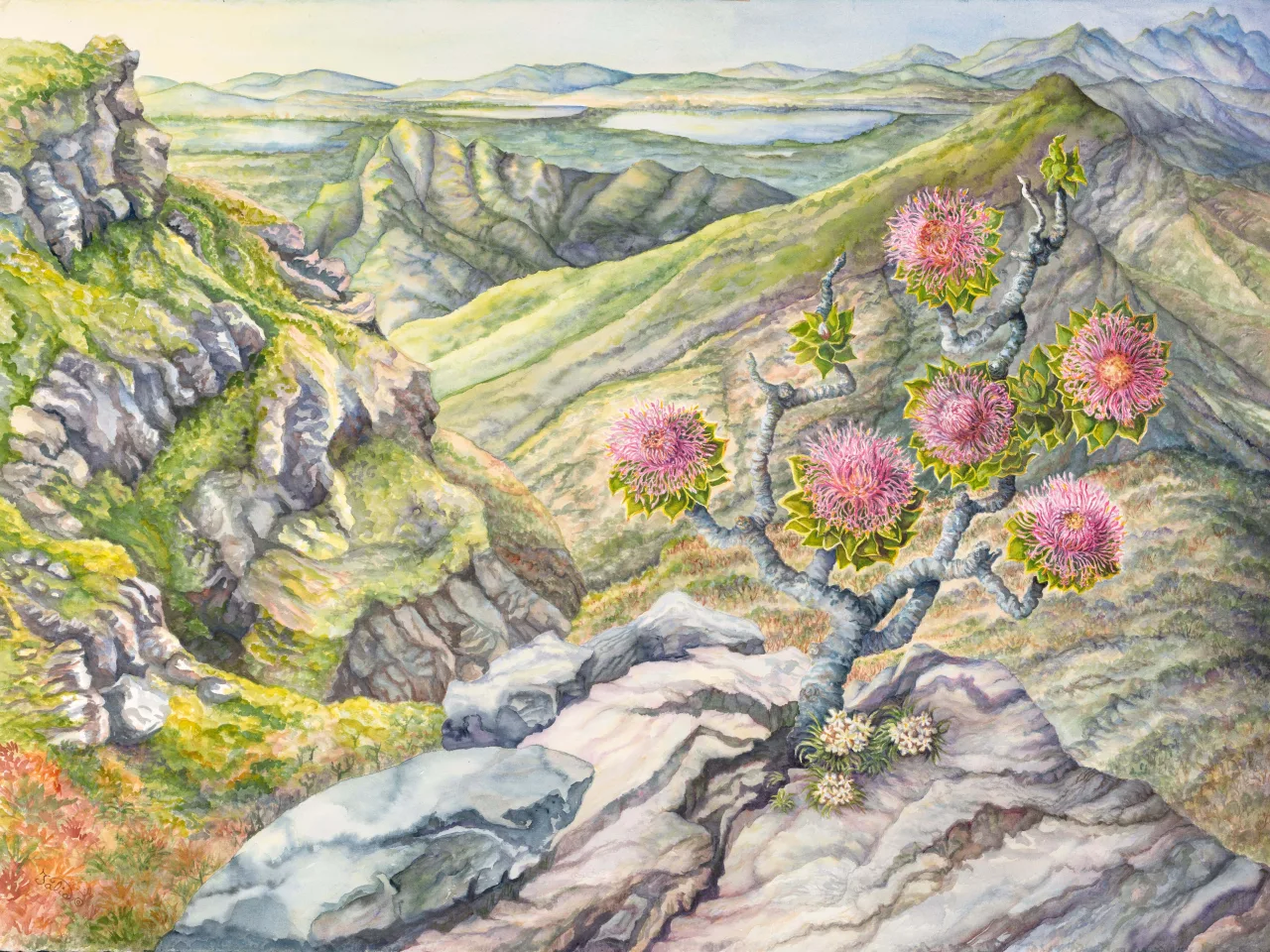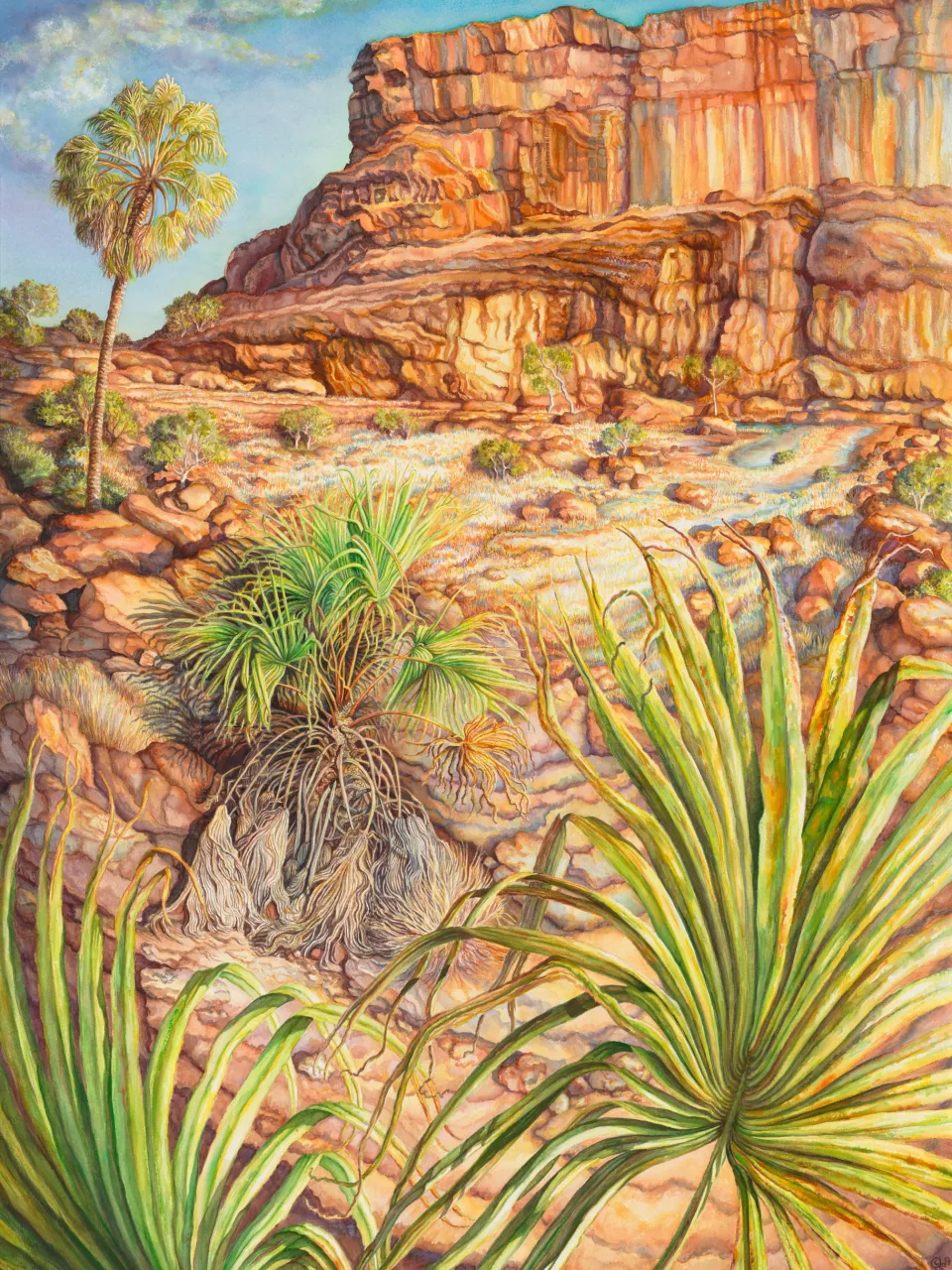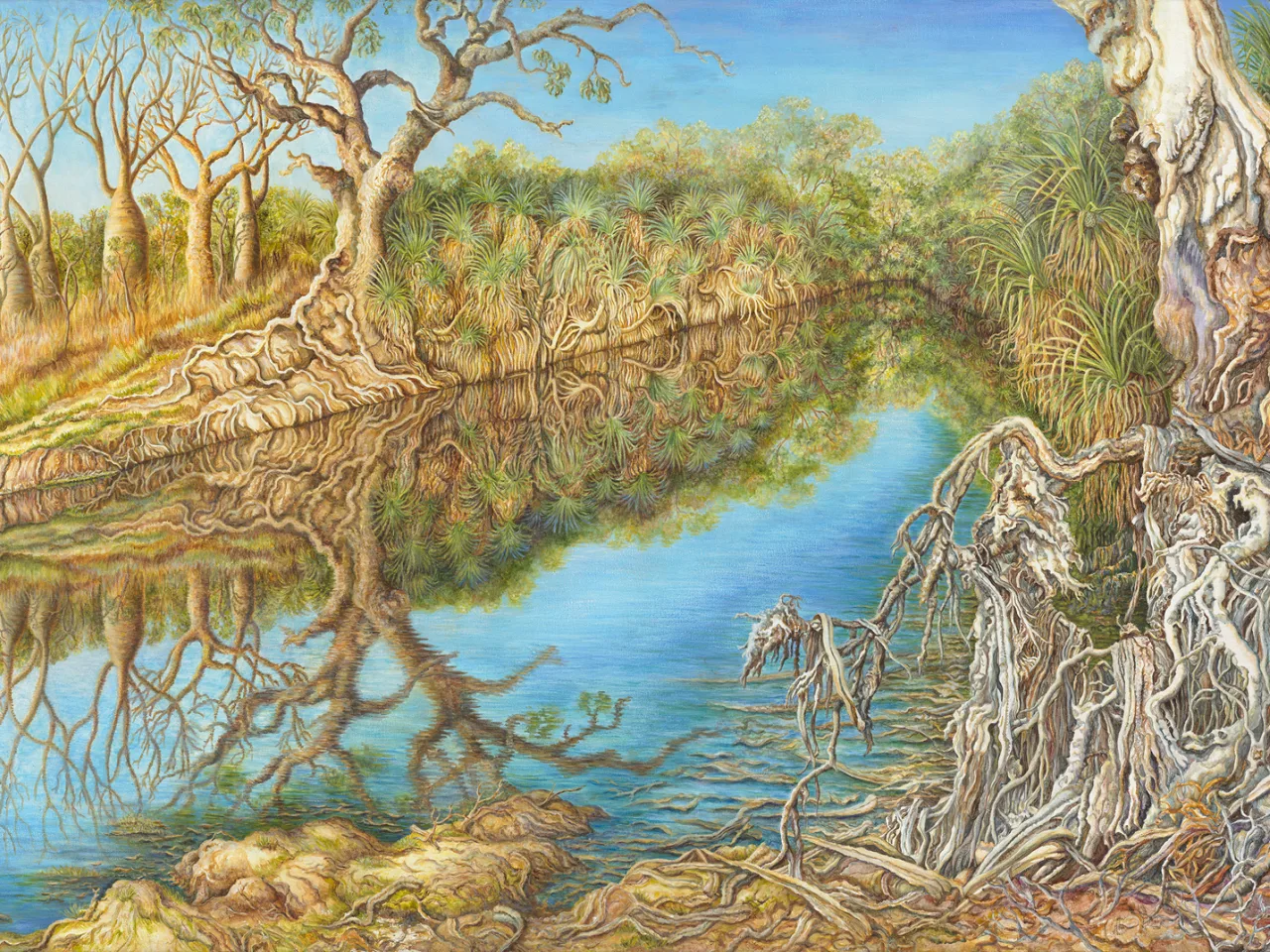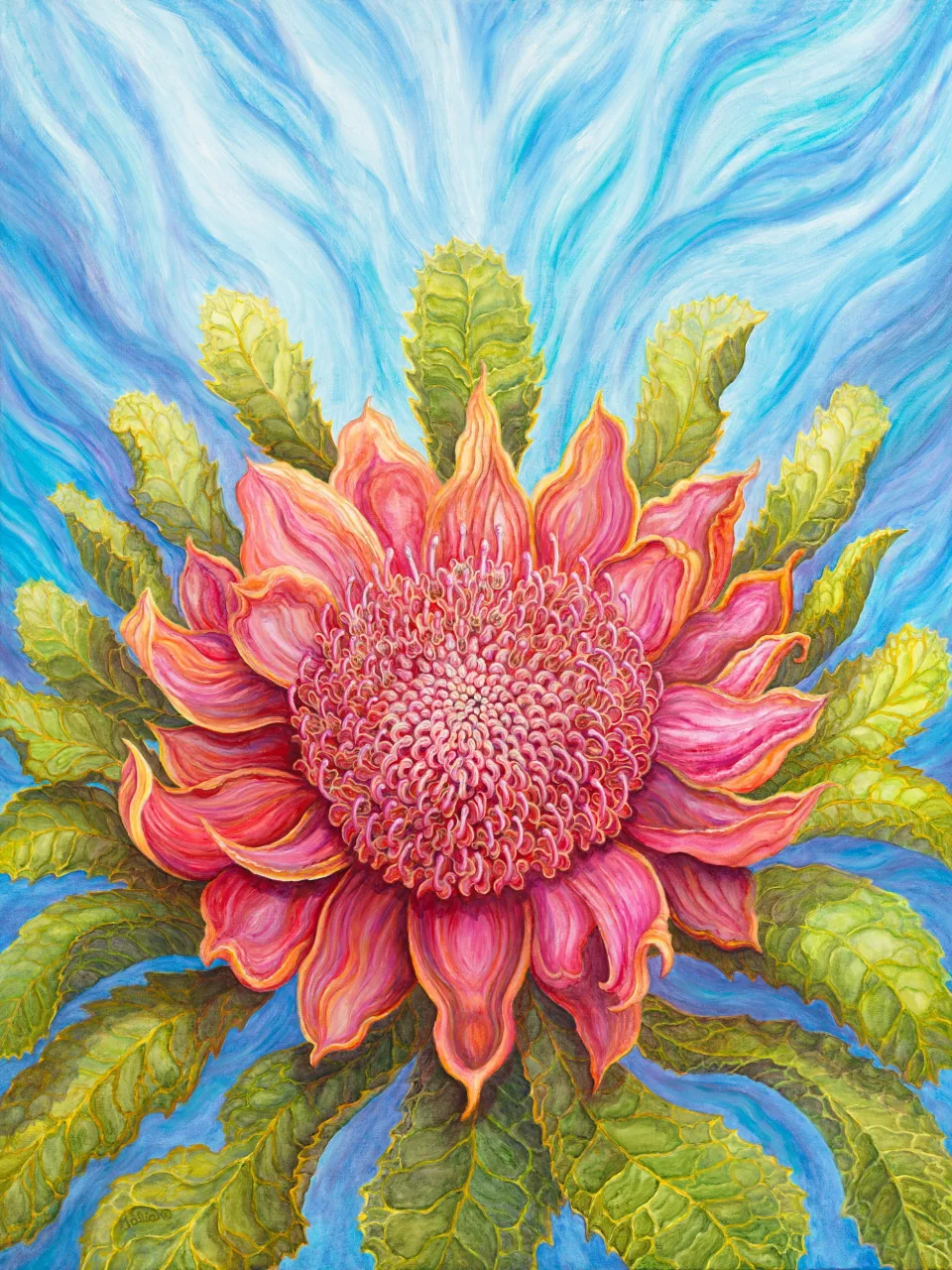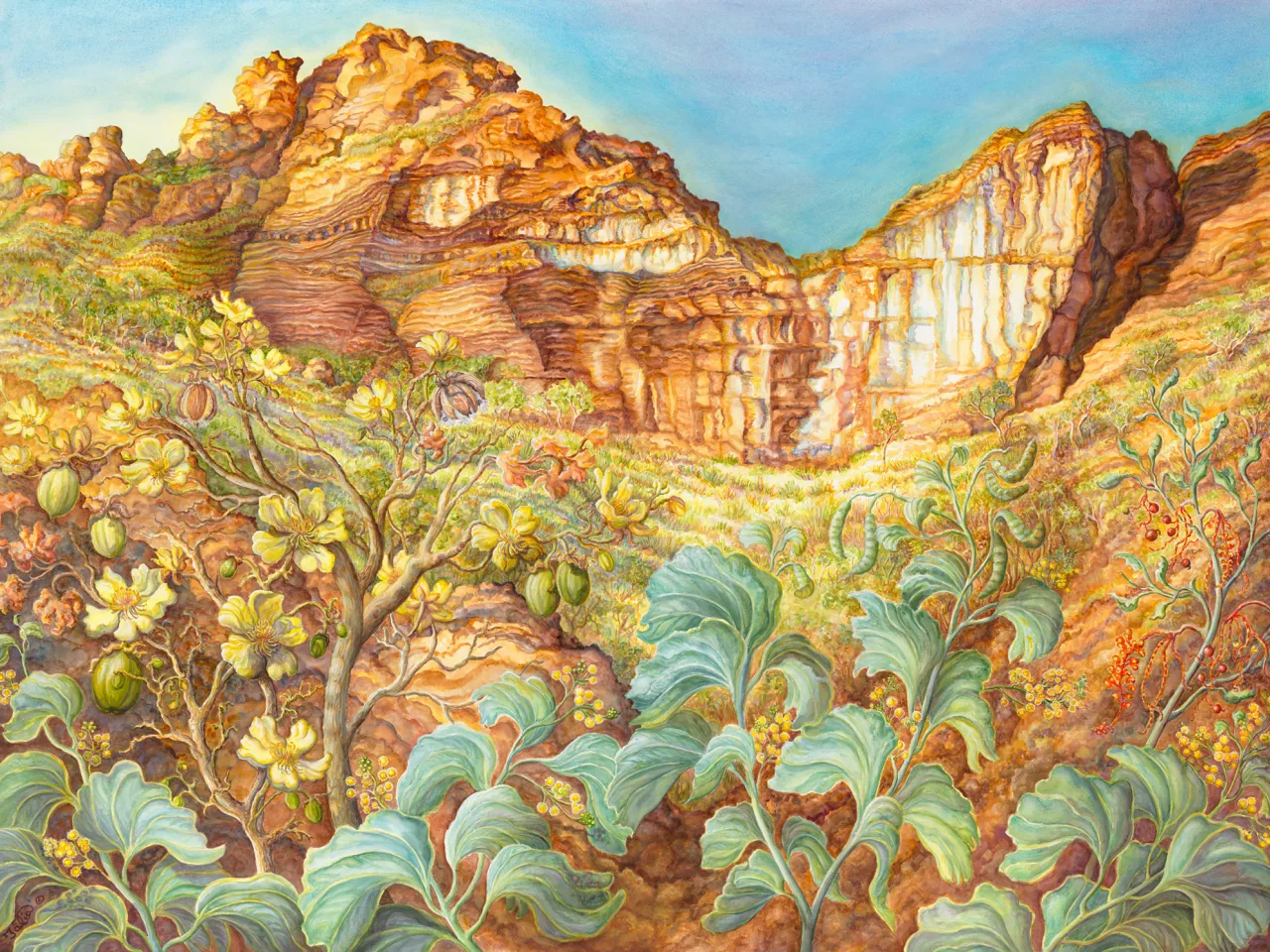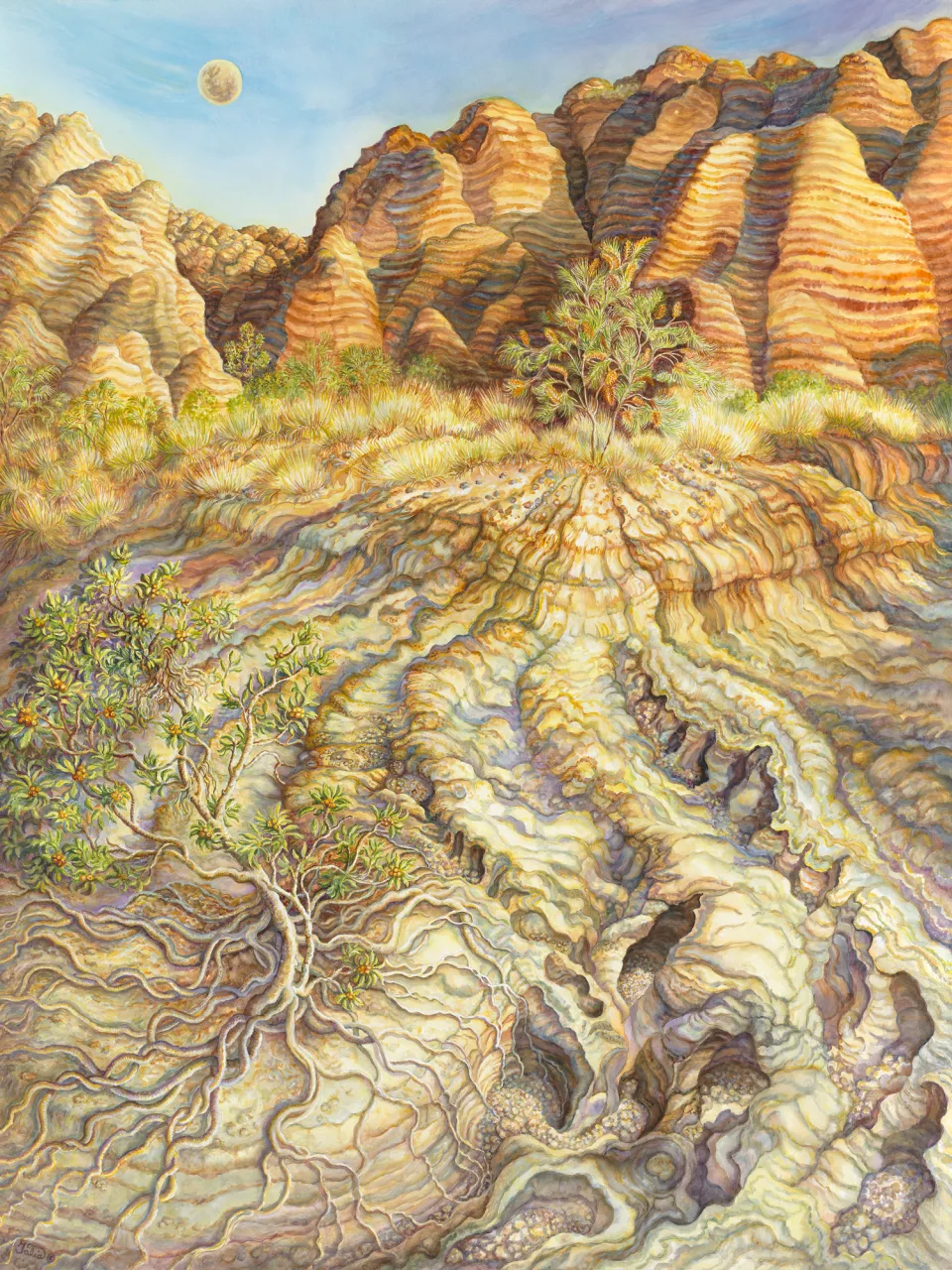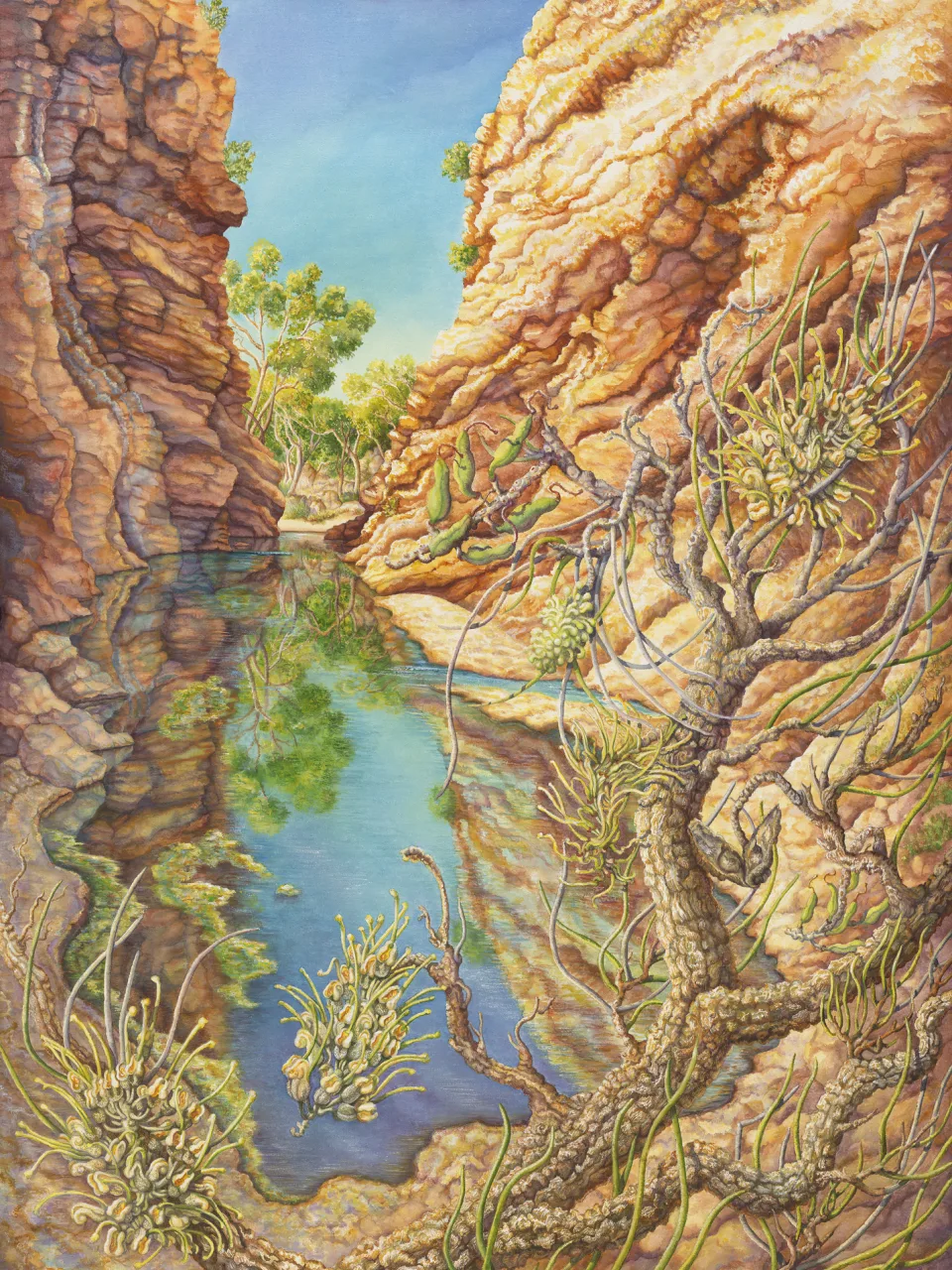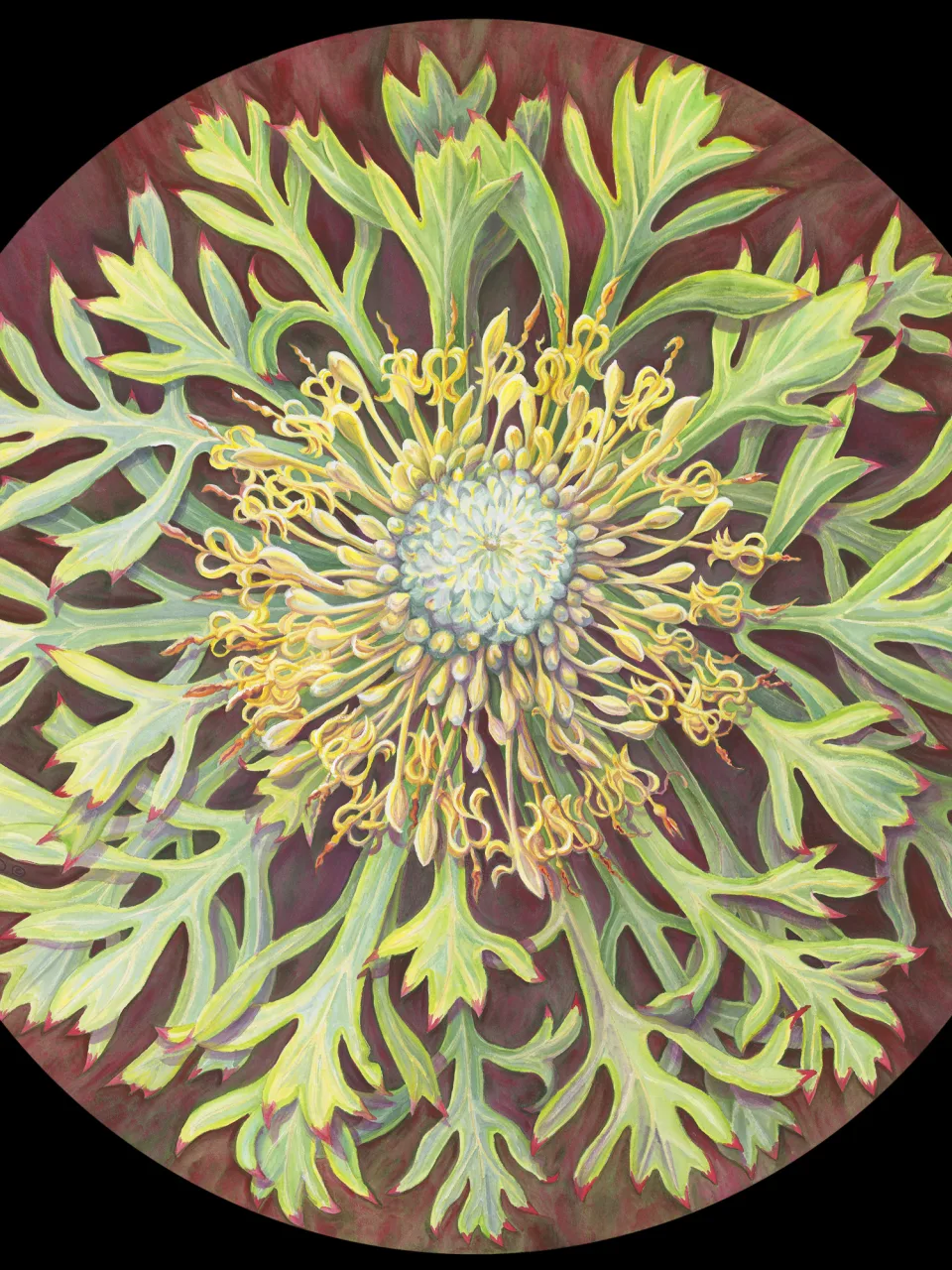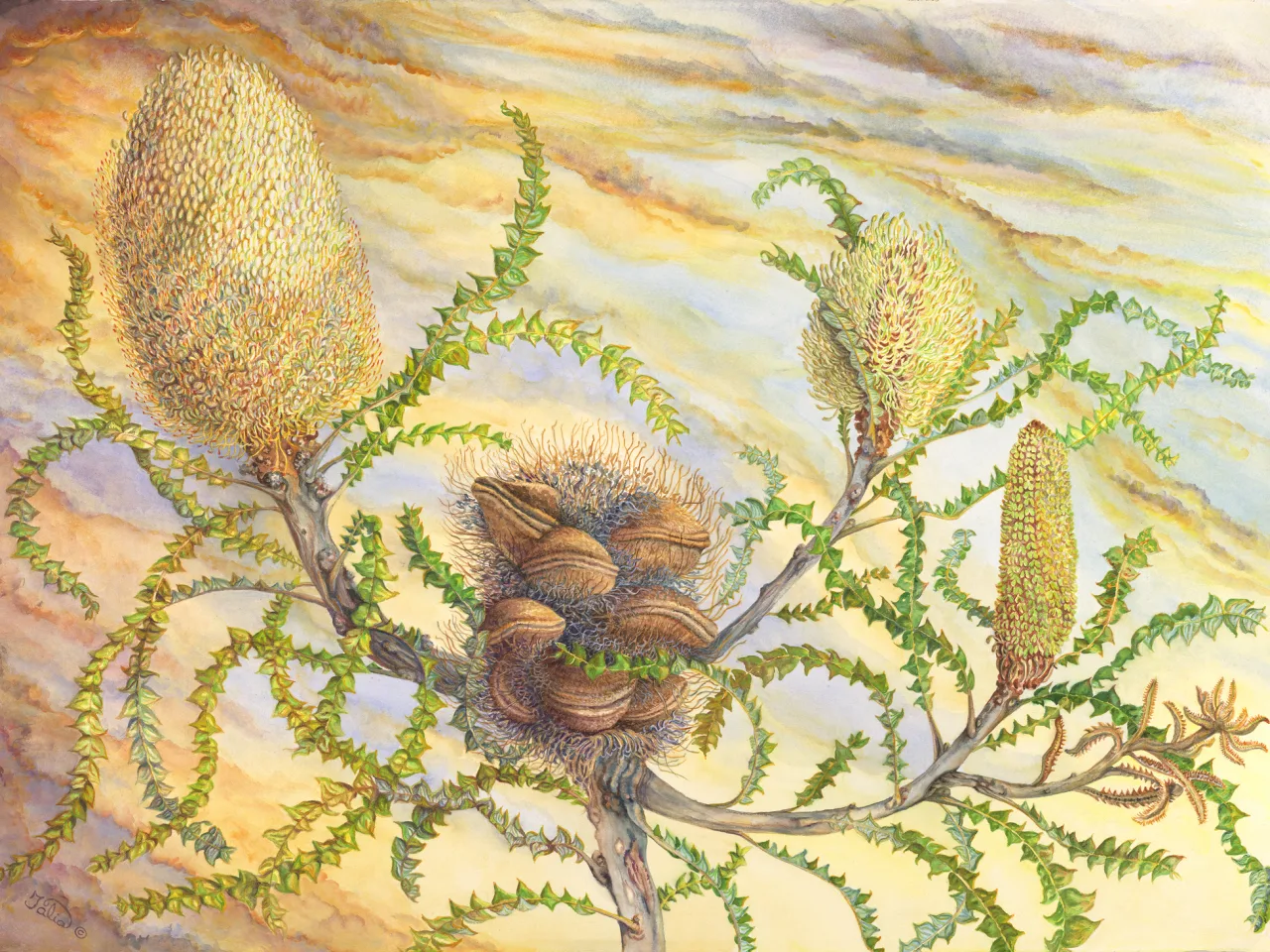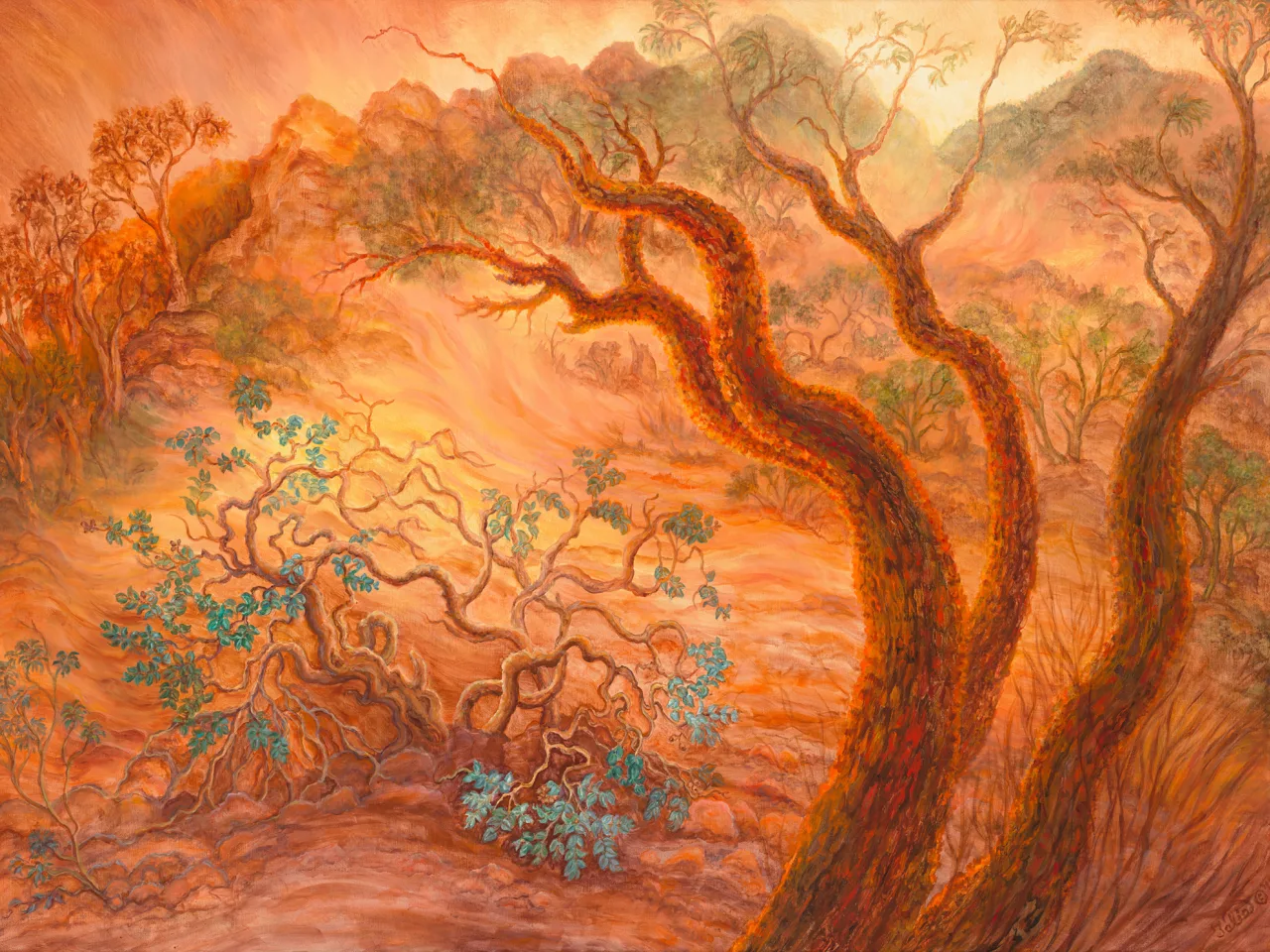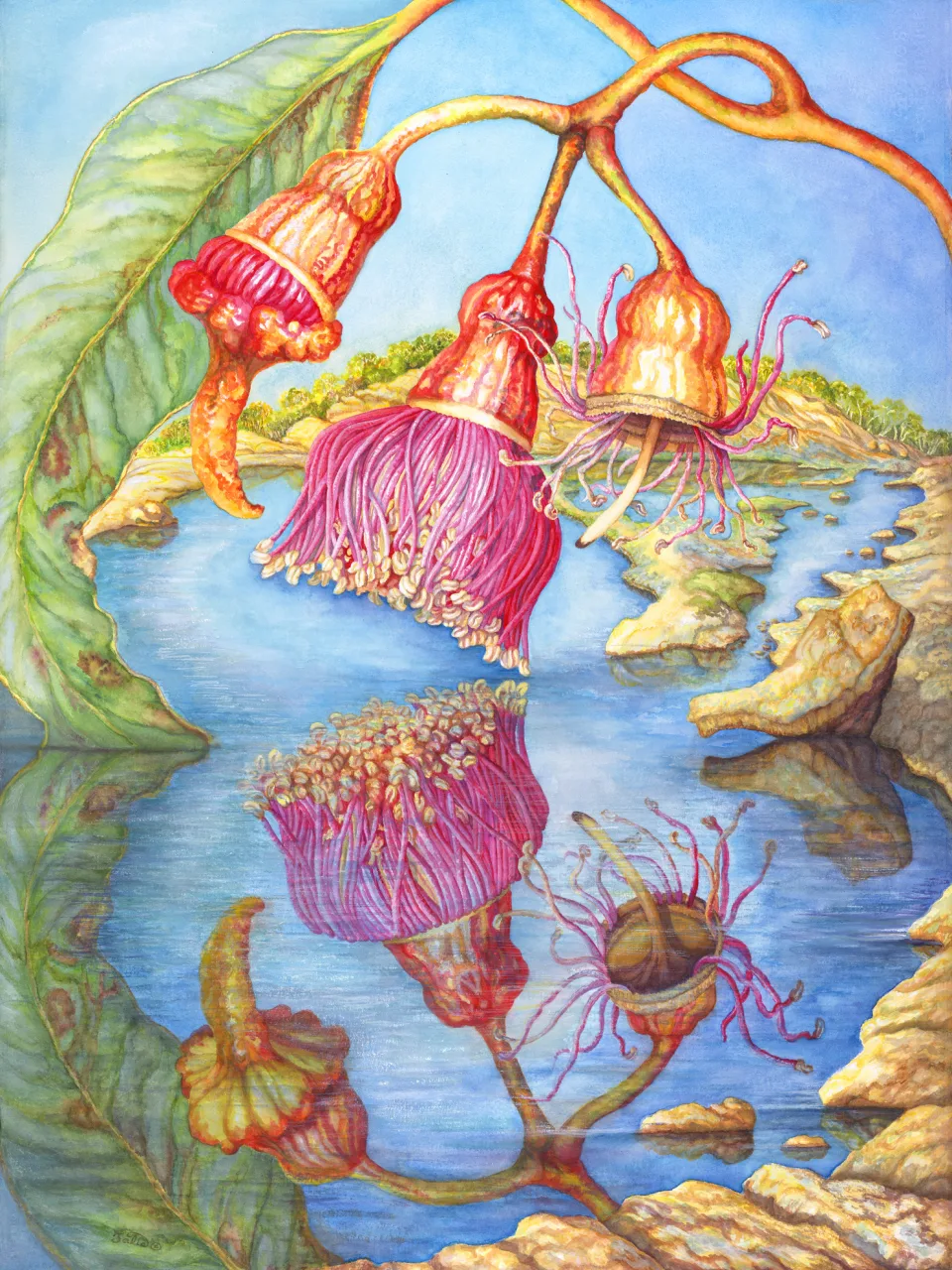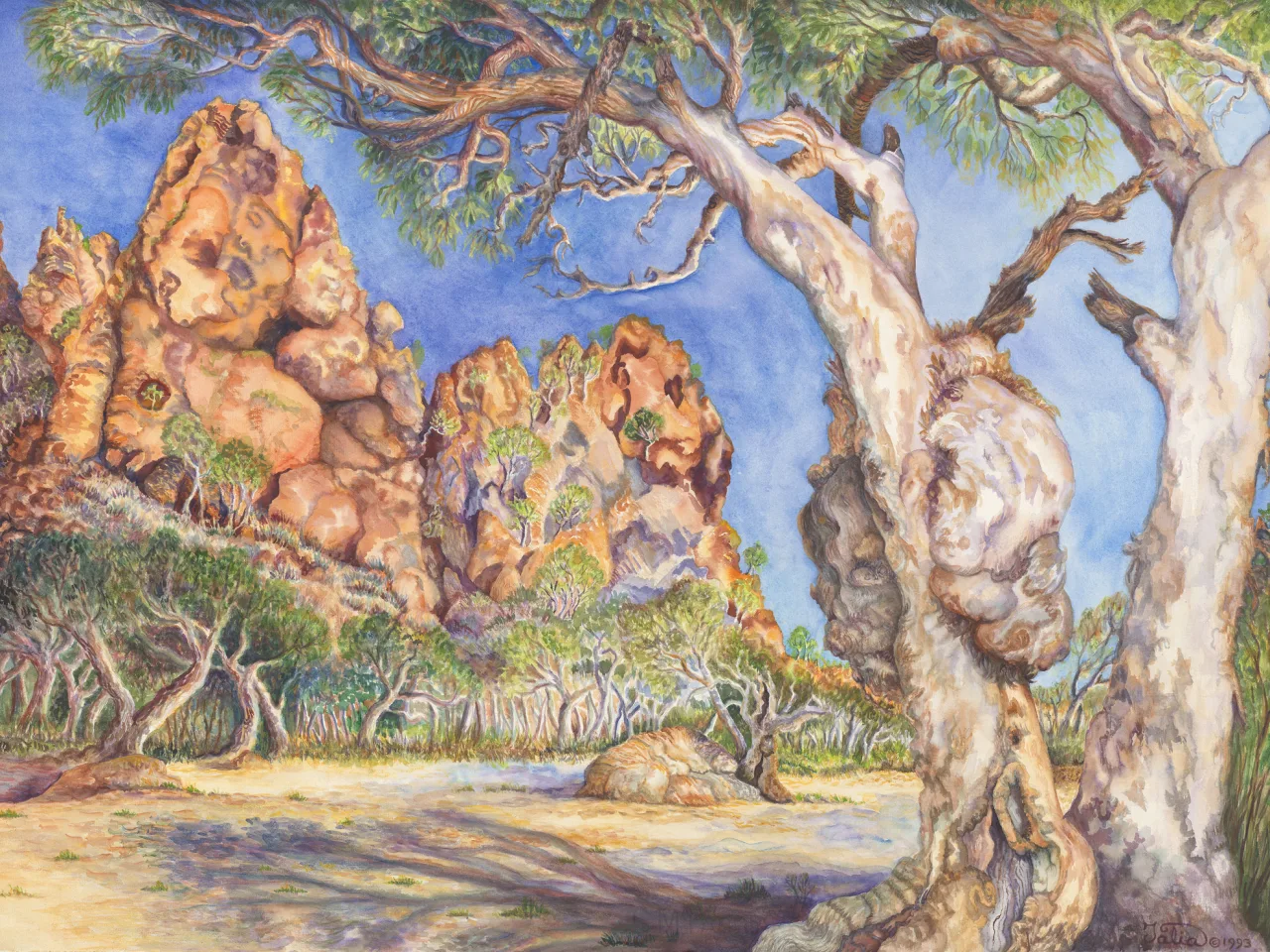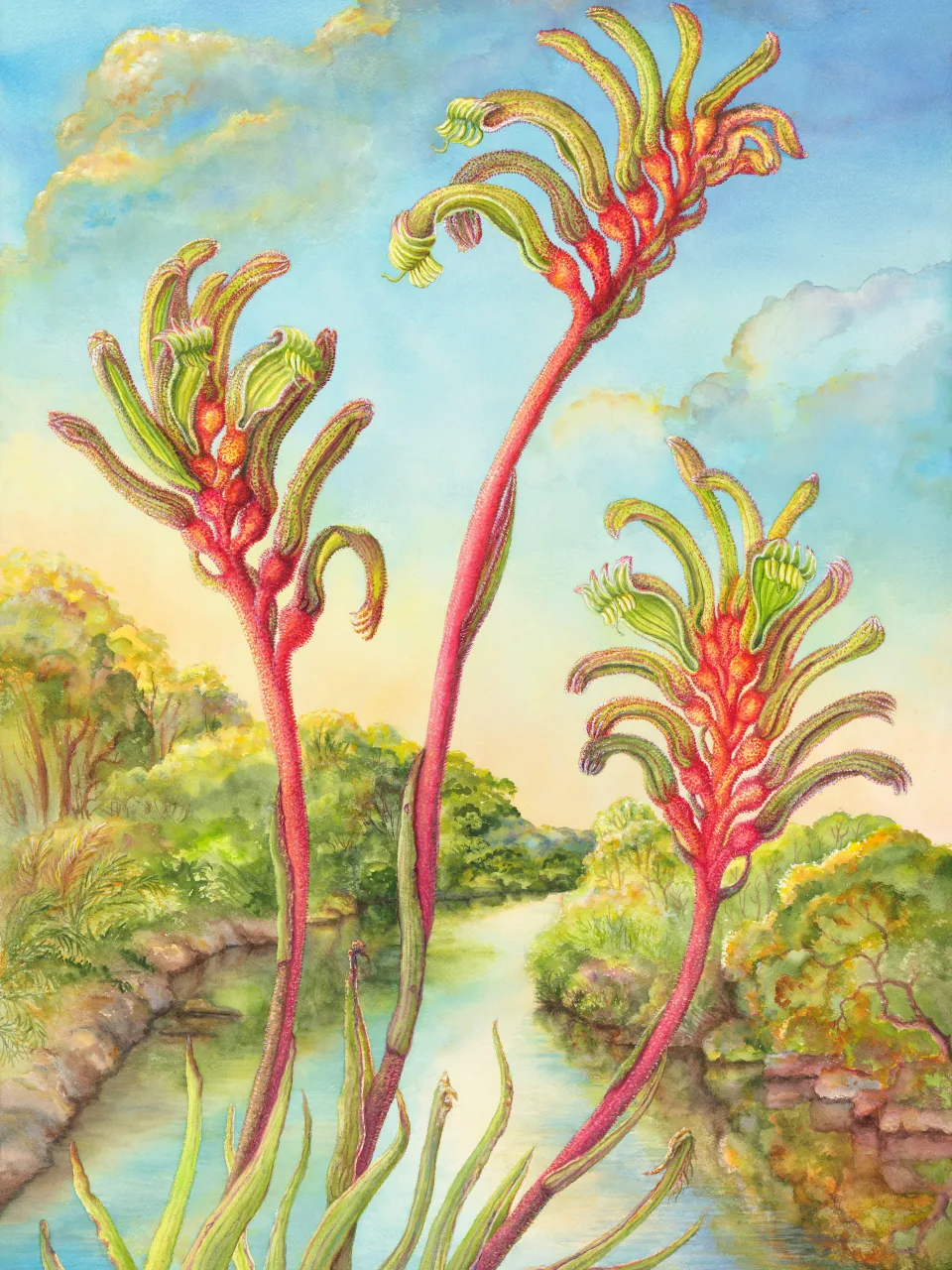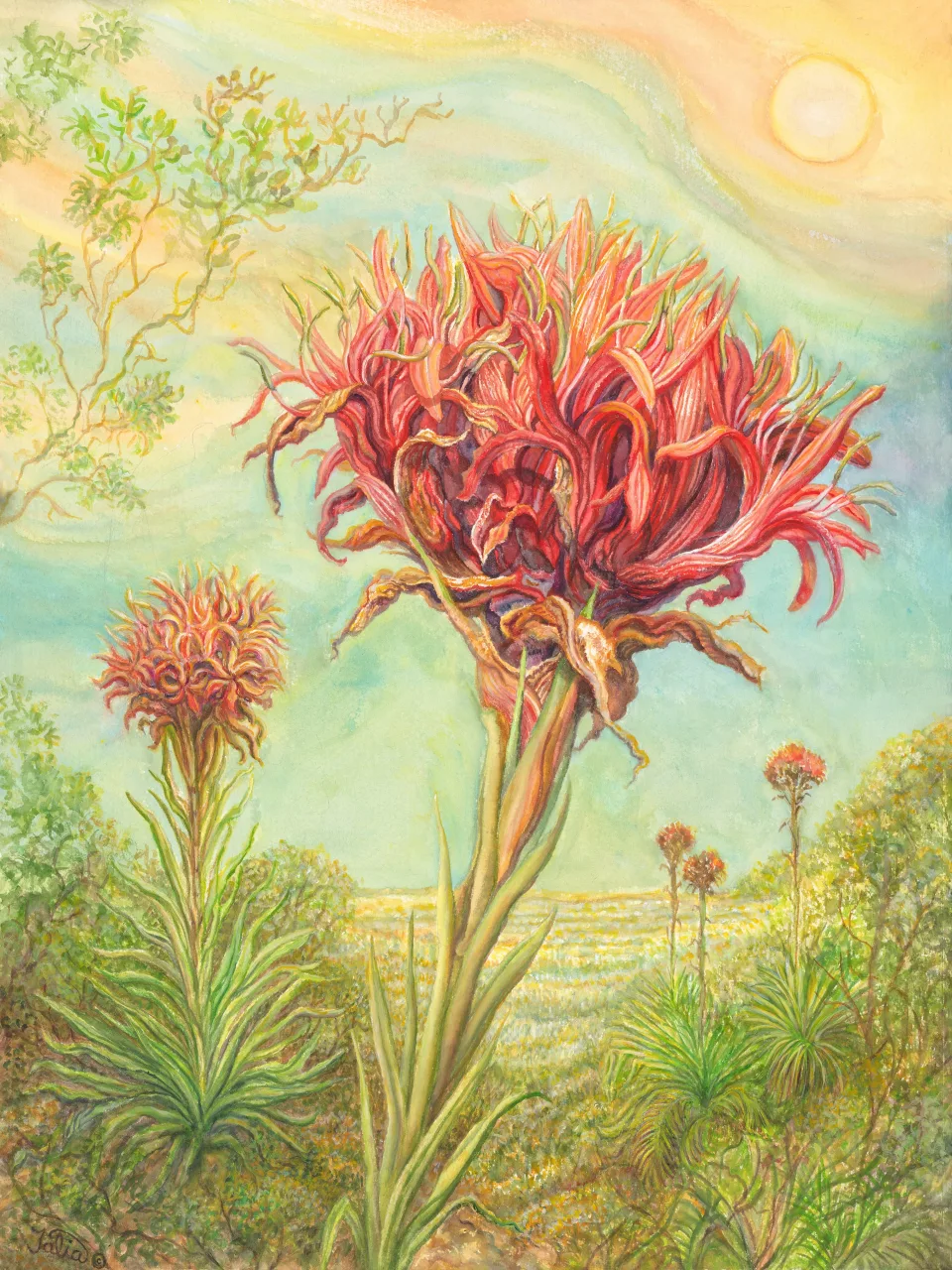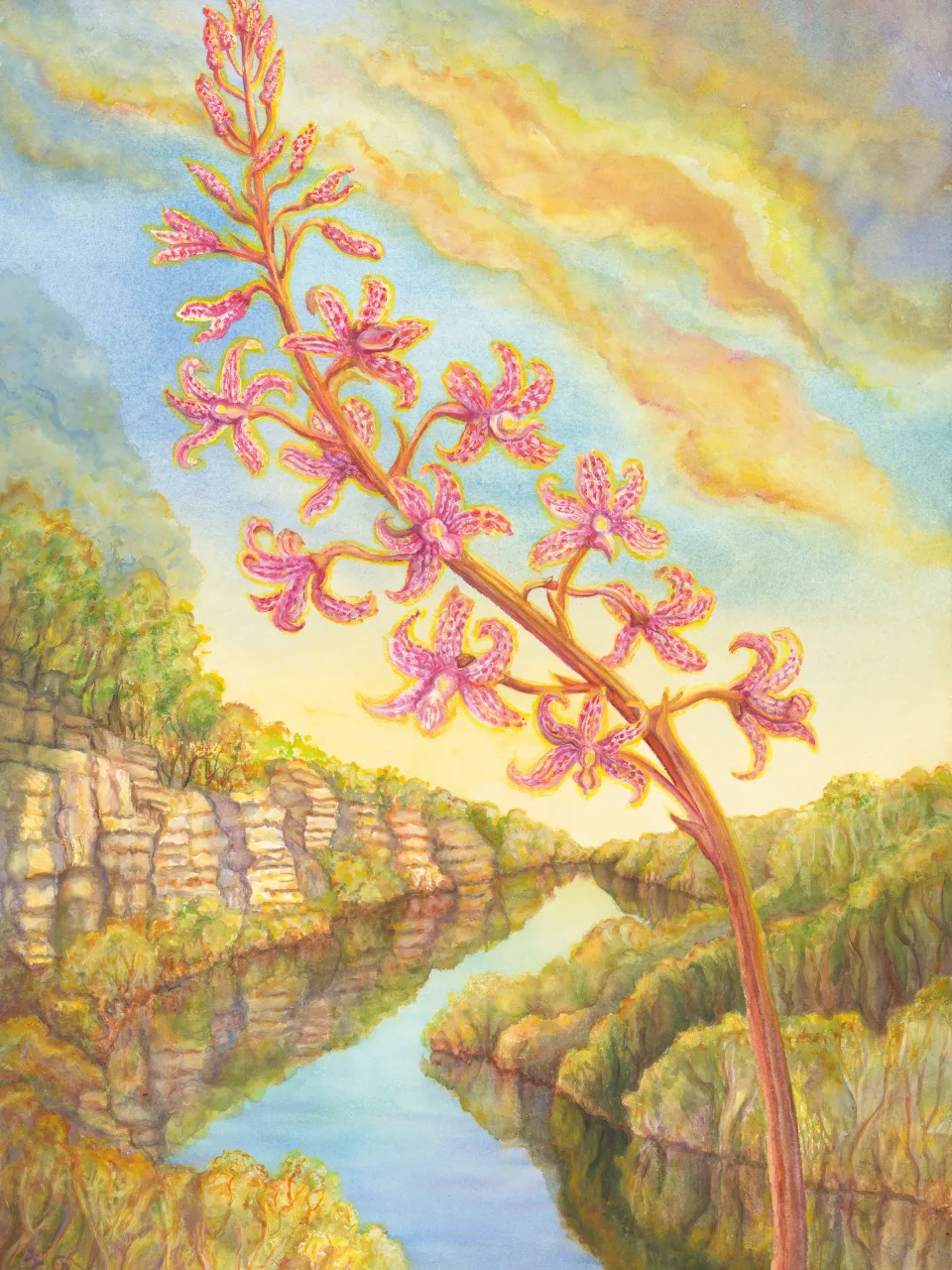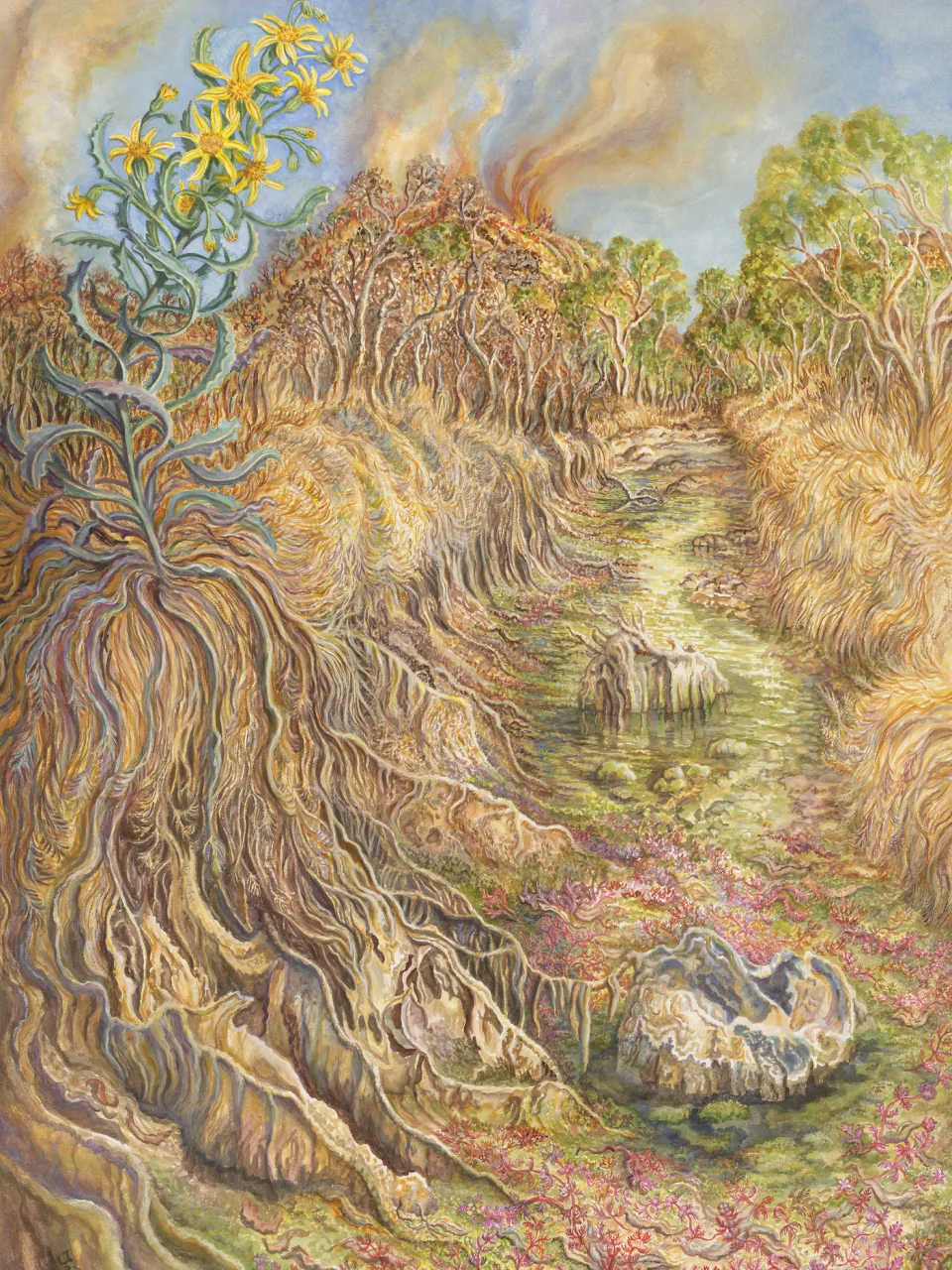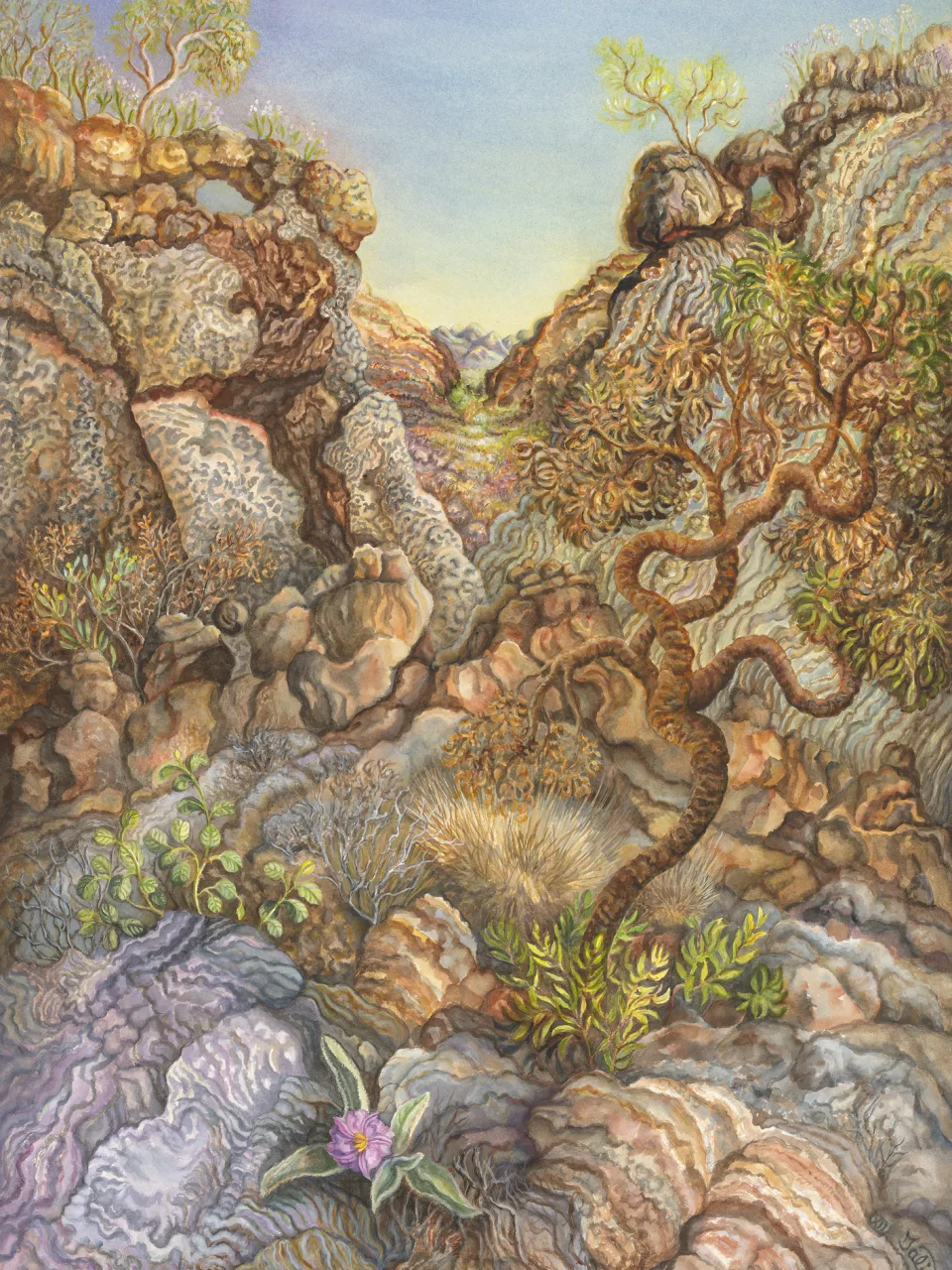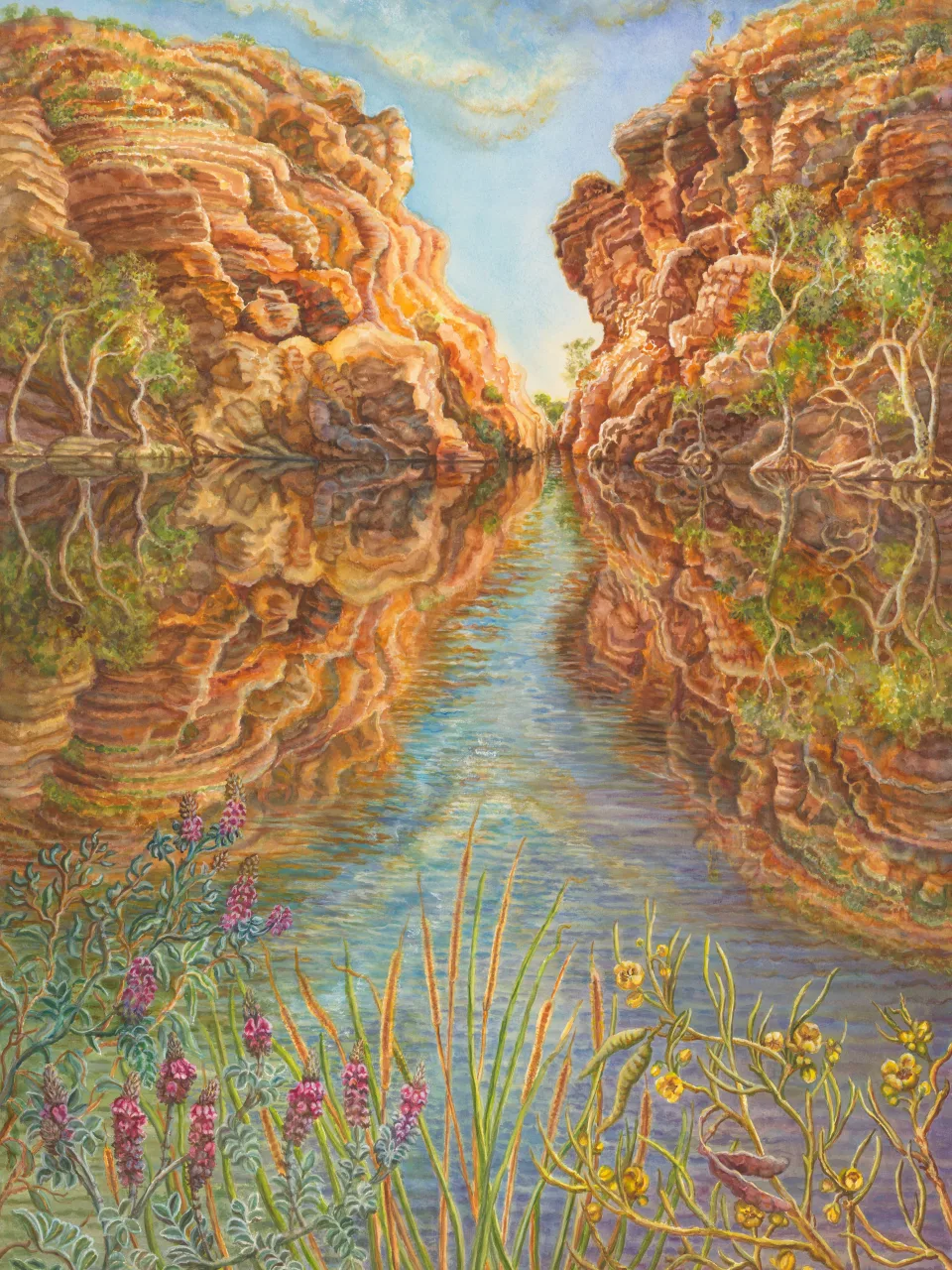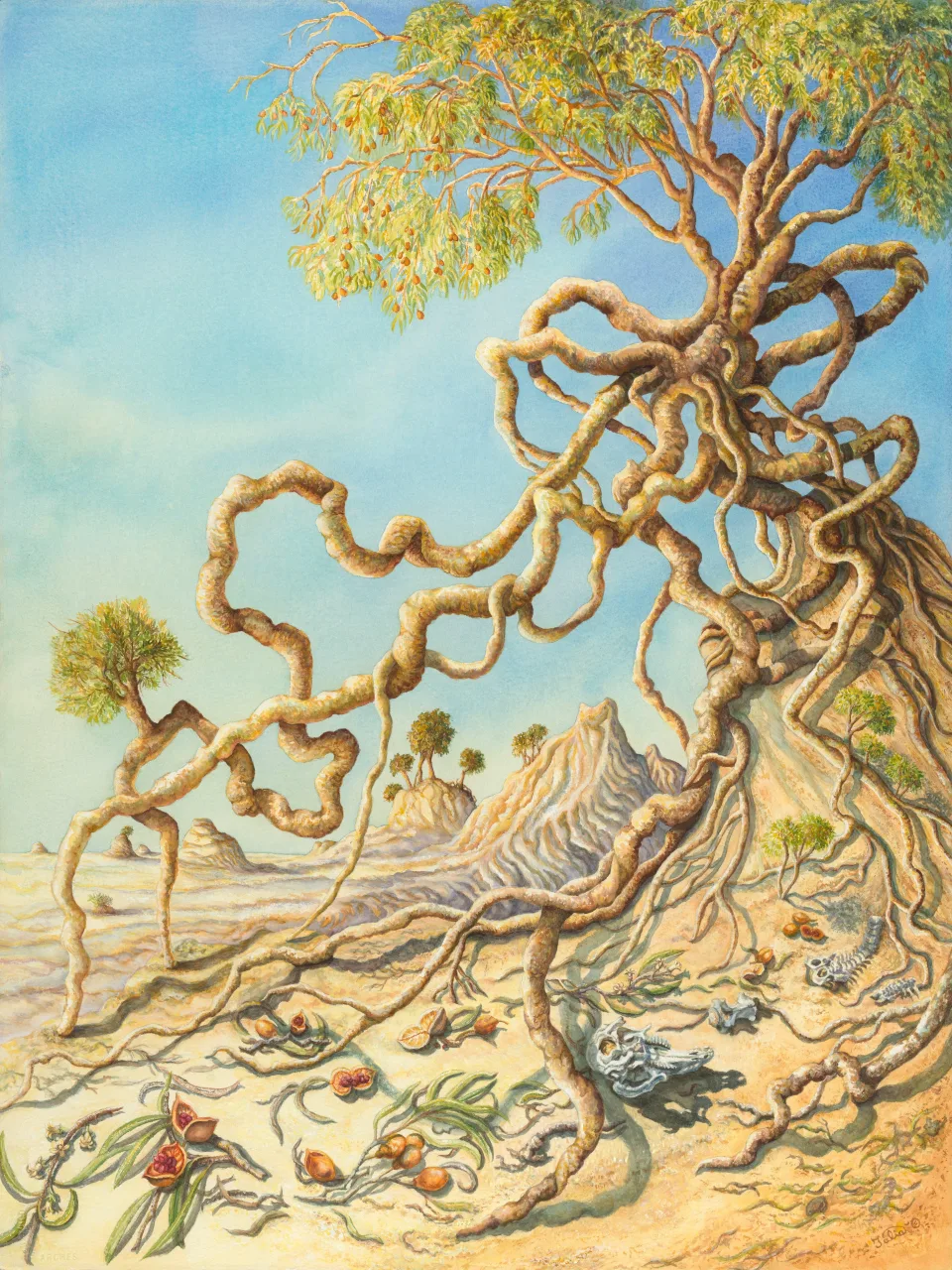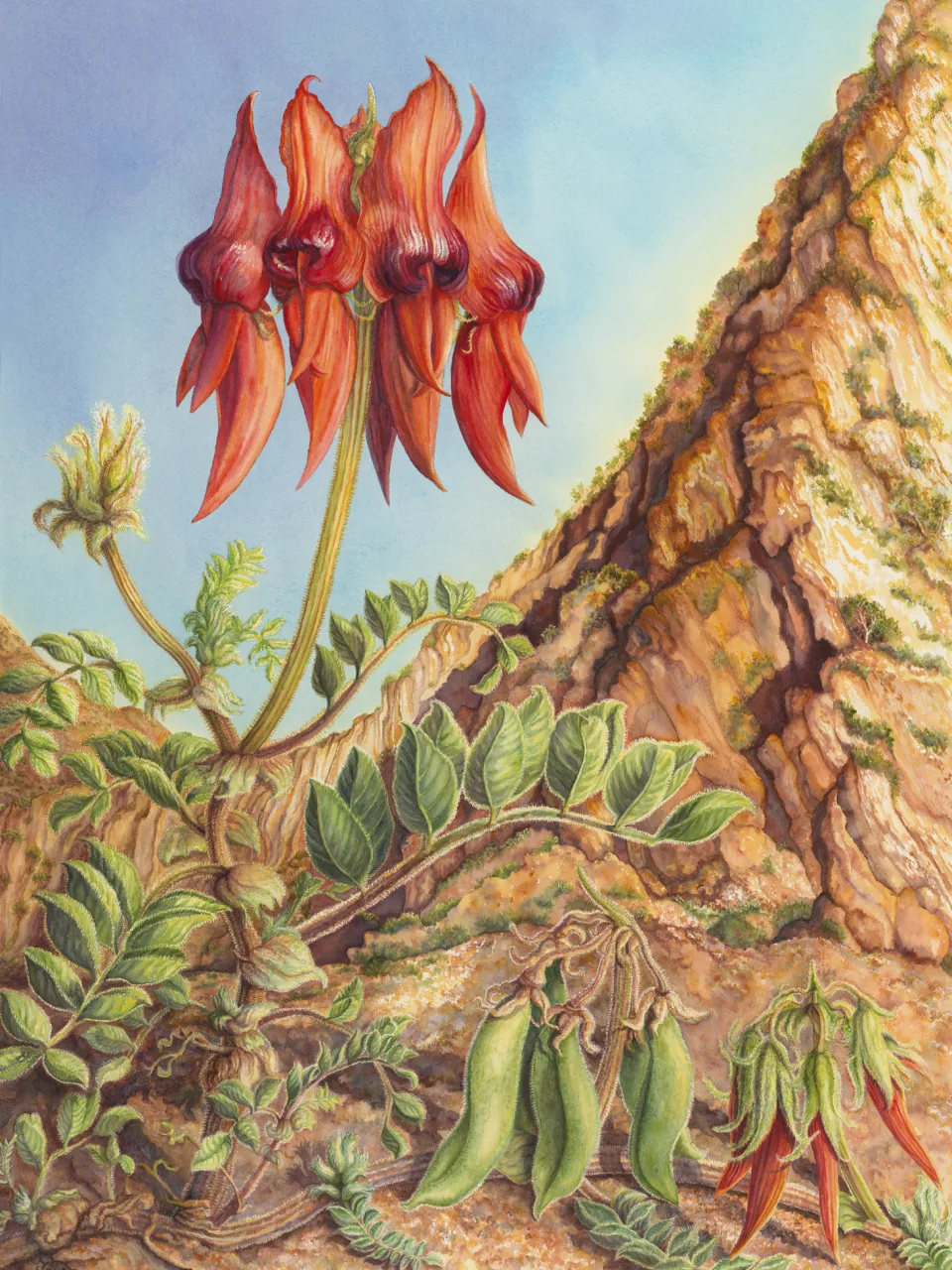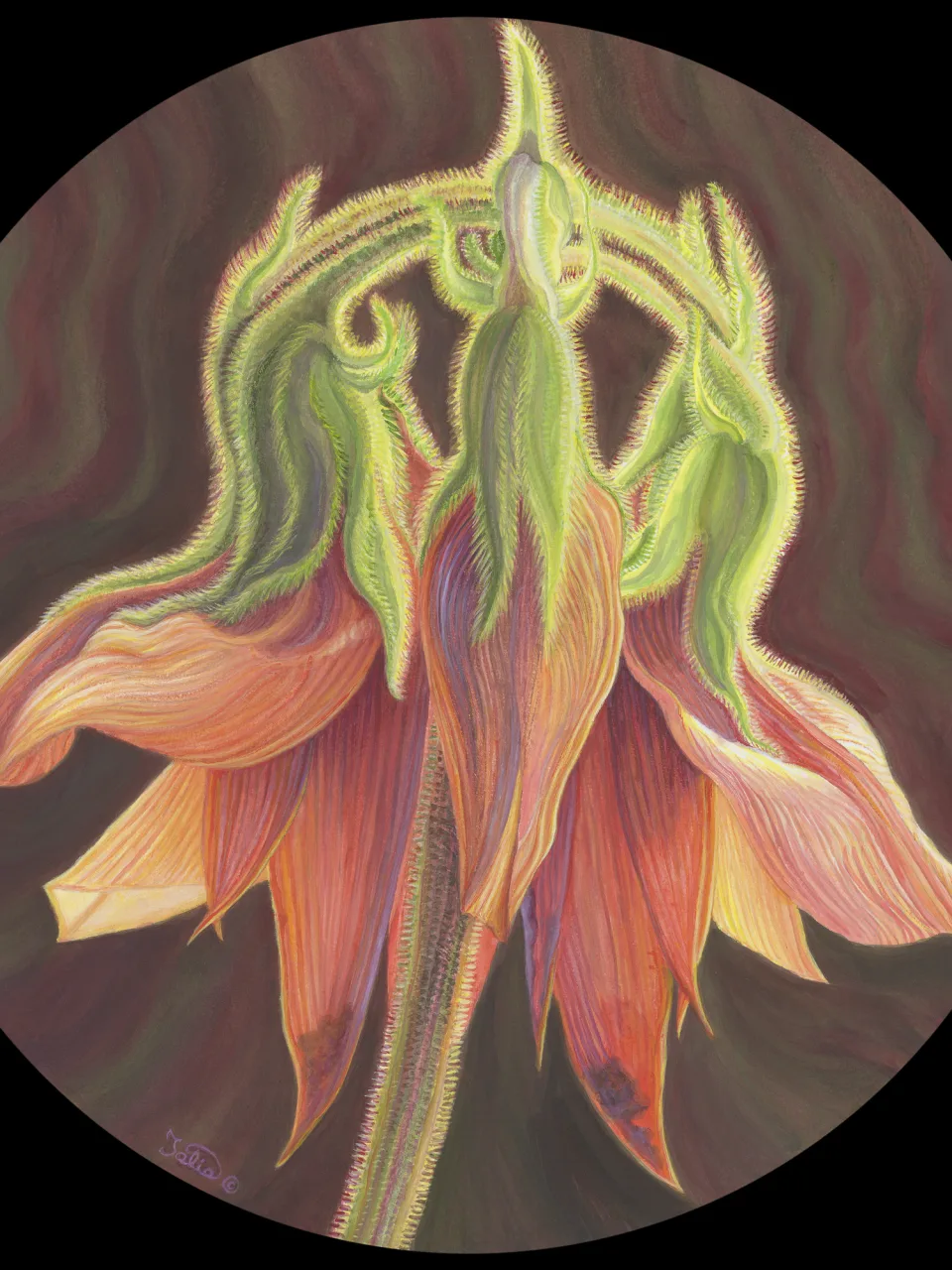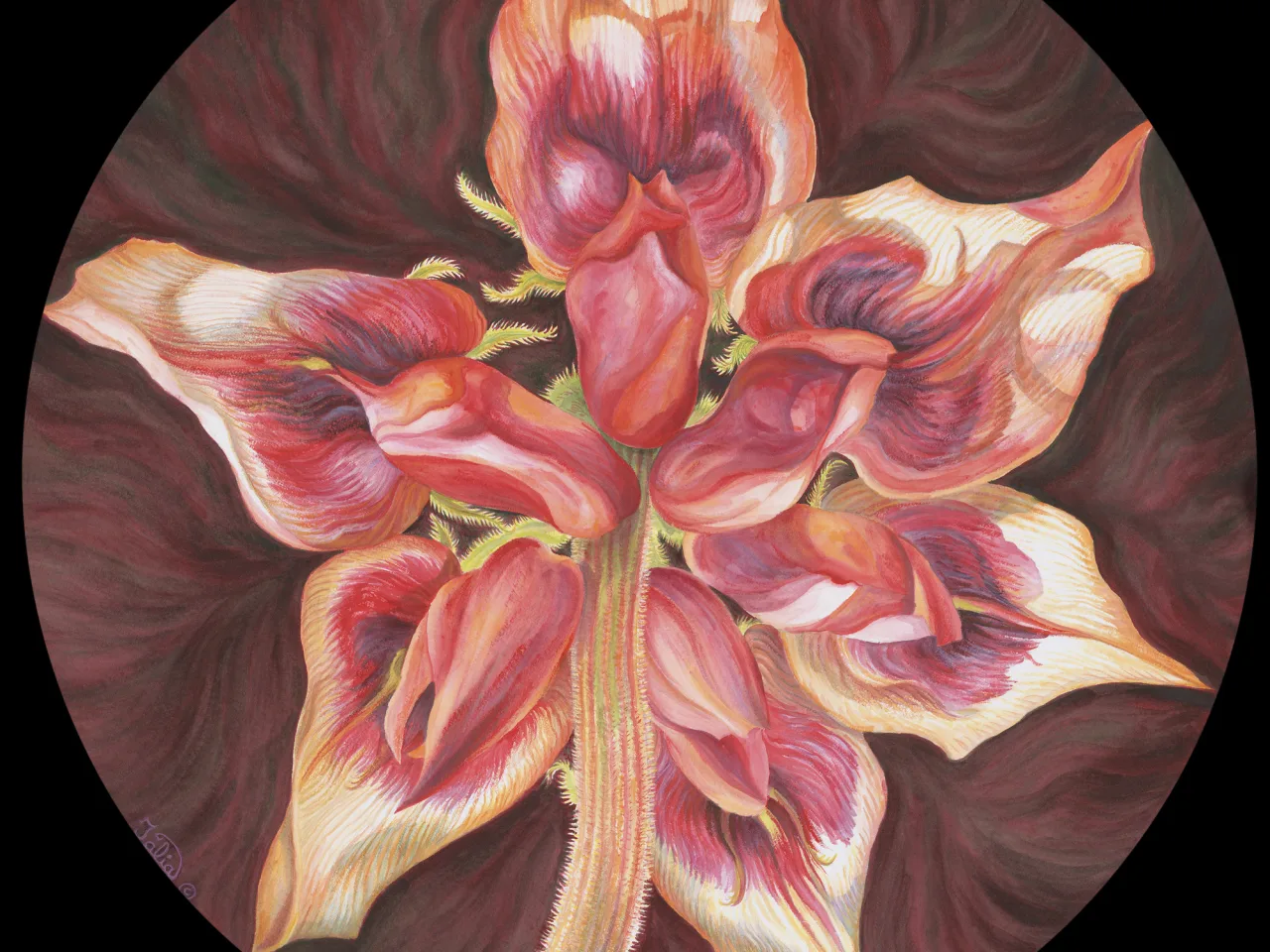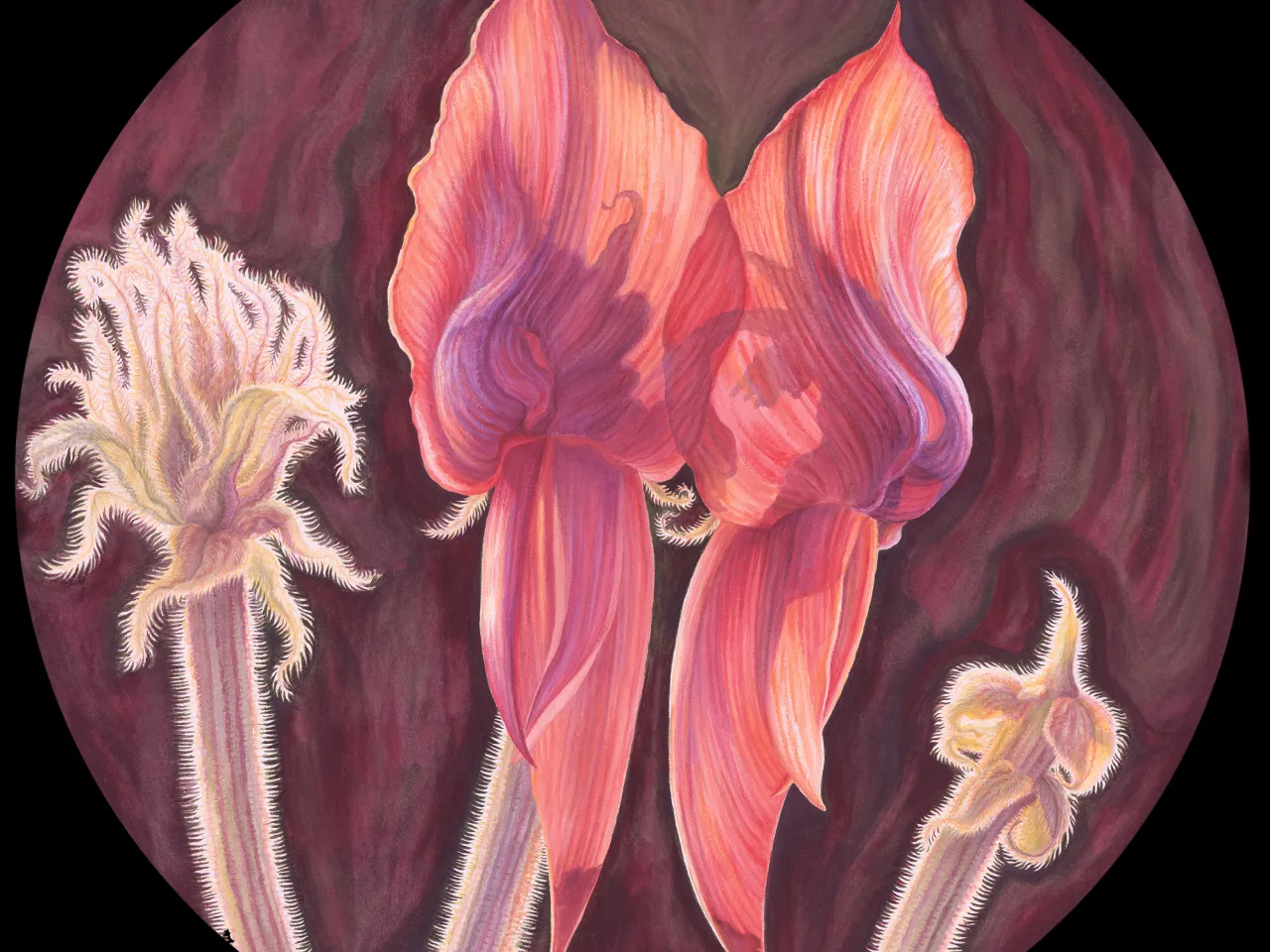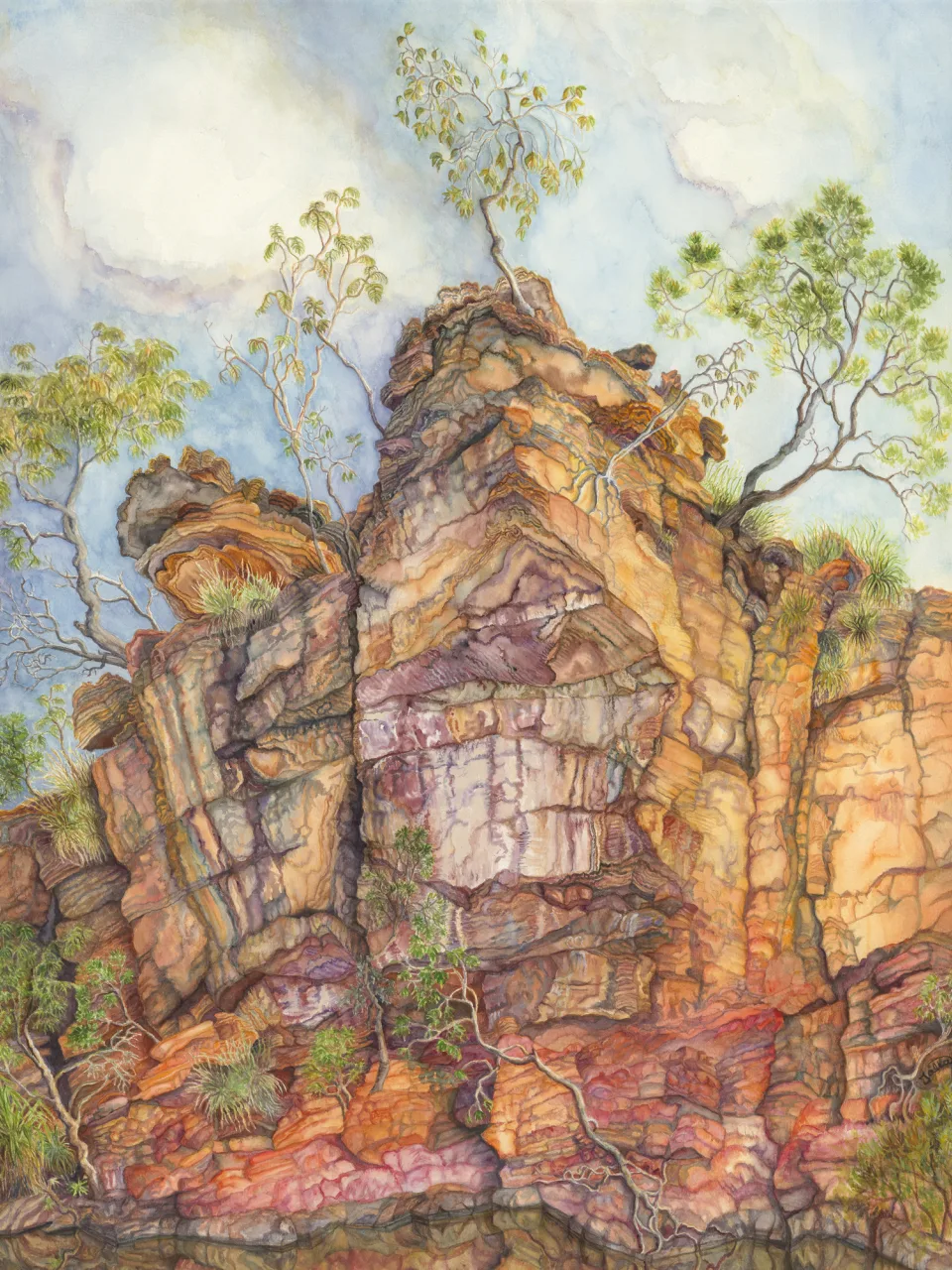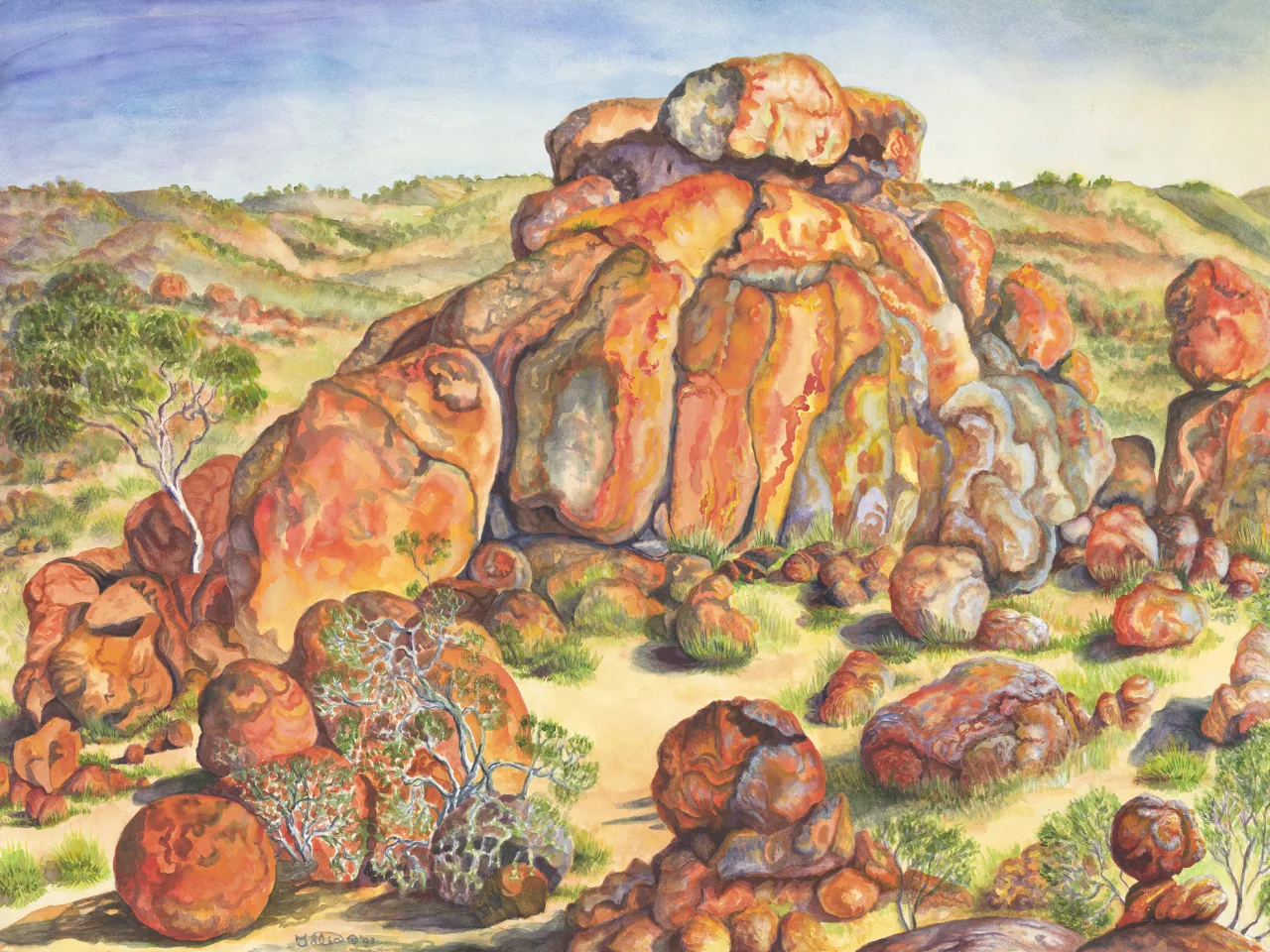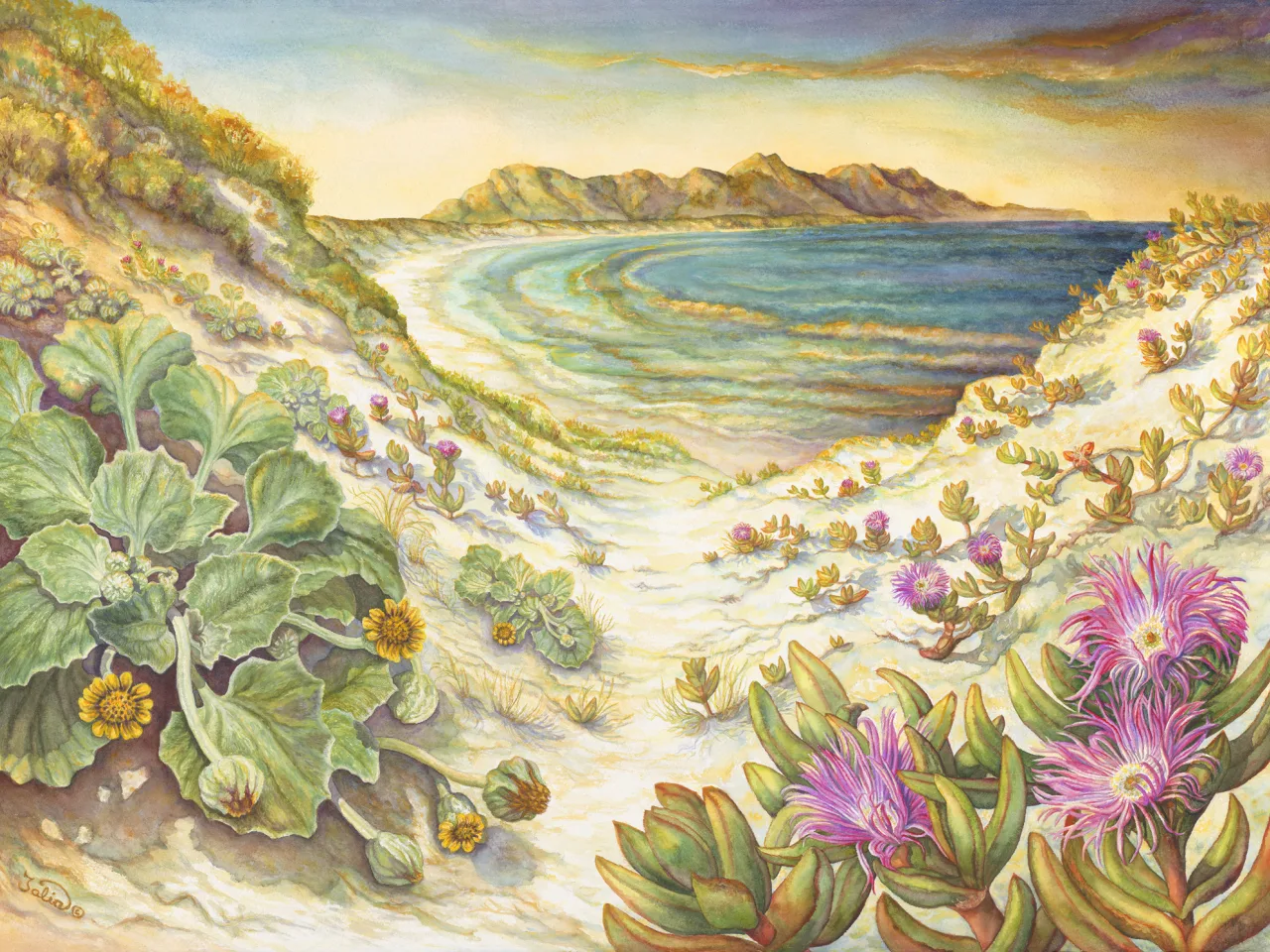Artwork 43 Illyarrie at the Murchison River Gorge, Western Australia
Section 3
Oxygen and Early Plant and Animal Life
Murchison River Gorge, Western Australia, Western Australia
- 1. Eucalyptus erythrocorys (illyarrie)
Artwork 43
Buy a print
Limited edition giclee archival quality print on 310 gsm Ilford cotton rag (from an original work in watercolour on watercolour paper, 75 cm high x 56 cm wide)
from the artist
A magnificent example of easily accessible colourful red-beds over 1,800 m thick can be found in the Tumblagooda Sandstone of the Murchison River Gorge near Kalbarri in Western Australia. These were deposited during the Ordovician period (between about 485–444 mya), which was marked by higher oxygen levels and an “explosion” of life. Life on Earth is punctuated by both “explosion”—when species rapidly diversify—and “extinction” events—when many species are wiped out.
We had ample time to admire the sandstone, as we planned a day hike through the gorge, found we had to swim many sections, and inadvertently spent the night around a campfire near the river’s edge. Luckily it was summer, so we survived quite well.
It was magical to experience the sunset and sunrise over the beautiful pink, red, and white layered walls lining the gorge, while imagining the millions of years it had taken for their formation. We also found signs of early animal life—the zipper-like tracks of eurypterids, large scorpion-like creatures which roamed the rock platforms in the area about 450 mya.
The feature tree in this artwork is Eucalyptus erythrocorys (illyarrie), which we discovered near the famous “Nature’s Window” sandstone formation. This eucalypt’s sculptural red buds contrast with the bright yellow flowers, making it a very attractive tree when flowering. It occurs in a very localised region of Western Australia from just north and south of Kalbarri, often in sandy soil.
